This article is an offshoot of what I normally write, but I can't help but relive my youth a bit and give a video game console timeline that lists the video games that have come out through the years.
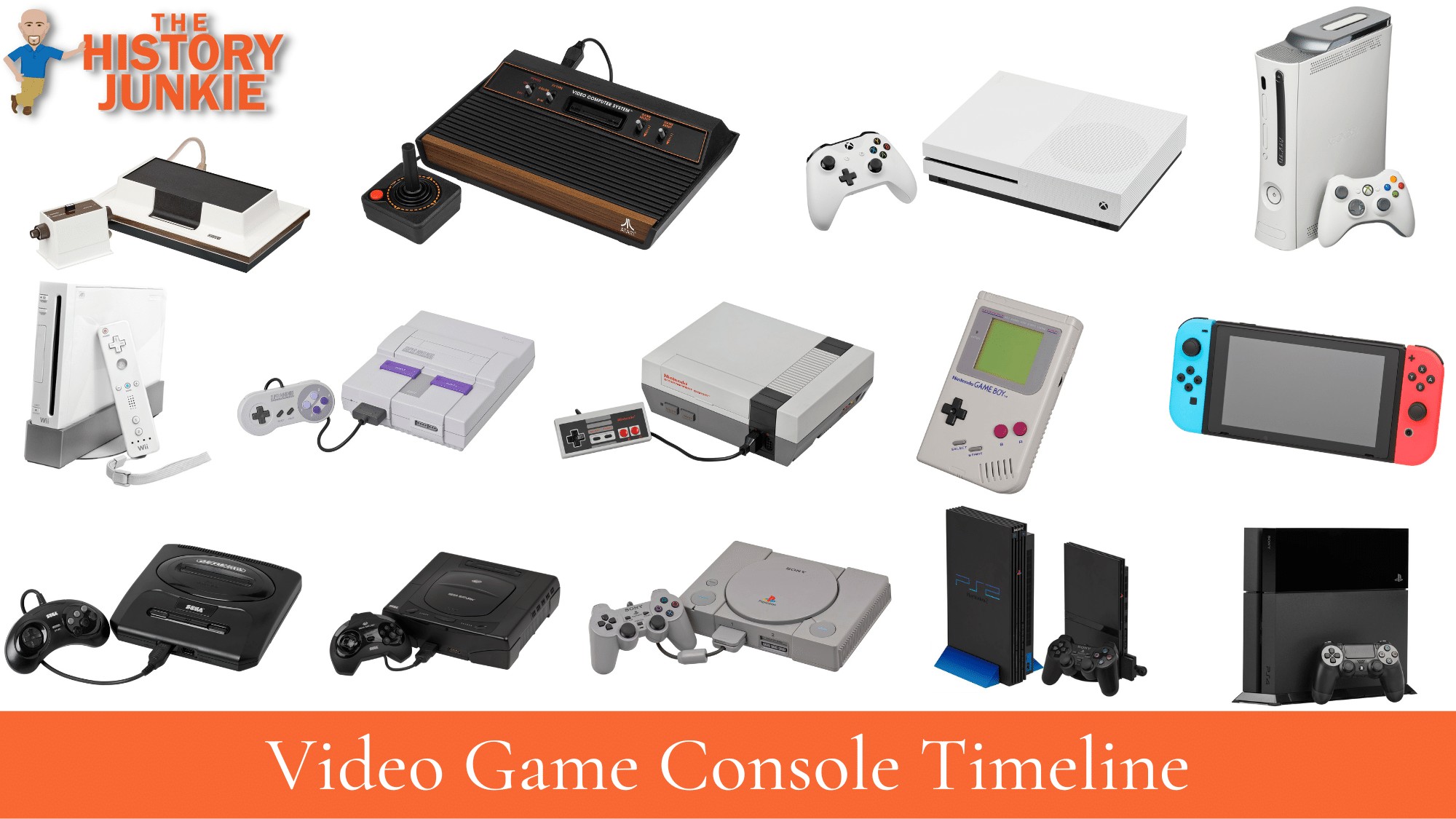
I will never forget unwrapping my first video game console, a Nintendo Entertainment System. I was in my 8-bit glory when I plugged the system in and pushed down that cartridge to hear the Mario theme that will forever be burned into my memory.
Jump to:
Even today, I can close my eyes and hear the clicking noise of the cartridge going into the system, and I remember figuring out how to hit the power button quickly enough to get the blue screen off the tube.
There have been many memories made with a controller. I have had many laughs with friends, arguments, and sometimes just sitting by myself, slipping off into a make-believe world that someone created.
Now in my 40s, video games are a large part of my life, but my kids are starting to enjoy them.
So here is my throwback to the 1970s til now: Video Game Console Timeline.
My focus will be on the consoles, although I will cover some arcade games because it is hard to separate the two. I will also not cover the early days when programmers were creating simulations. While that is certainly part of video game history, it is not what I want to talk about.
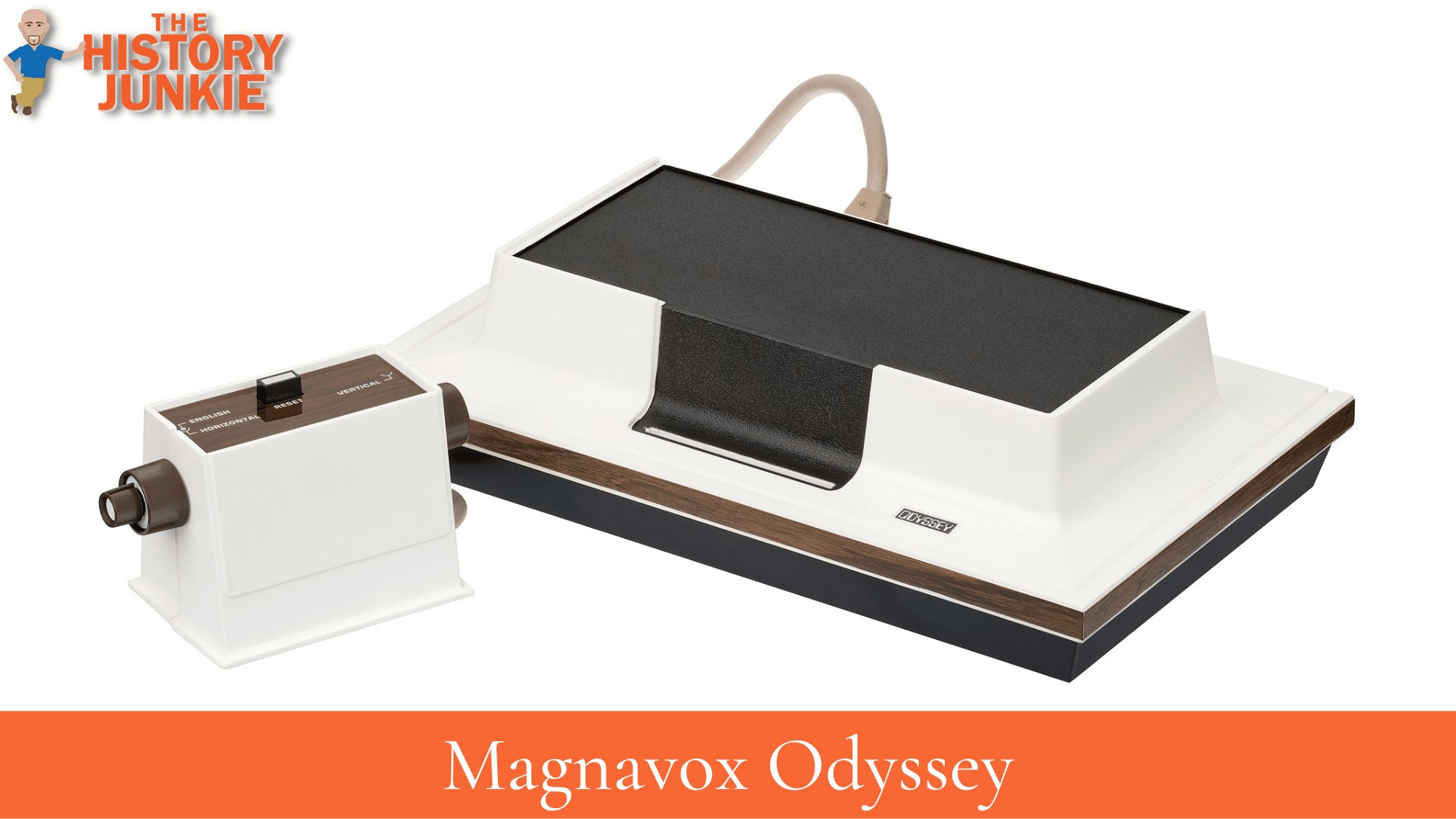
Magnavox Odyssey - September 1972
The Magnavox Odyssey was a Ralph Baer creation and the first attempt at a home console video game. It was released in September 1972. It was the pioneer of the video game console, and looking back on it...I'm not sure how it was fun.
The screen gave the same display, and Baer created an overlay that could go over the screen in order to change the game.
It was just the beginning, and you have to start somewhere. I am sure that it was a lot of fun for those who had never seen or played a video game.
The following is a promotional video for the release of Odyssey.
Ralph Baer would go on to become known as the Father of Video Games and to sue Nolan Bushnell for copyright infringement.
The Odyssey did not see the market long. Record inflation in the 1970s under President Jimmy Carter made it too much money for Magnavox to produce.
They would re-release individual games on handheld devices that were more affordable to make and sell.
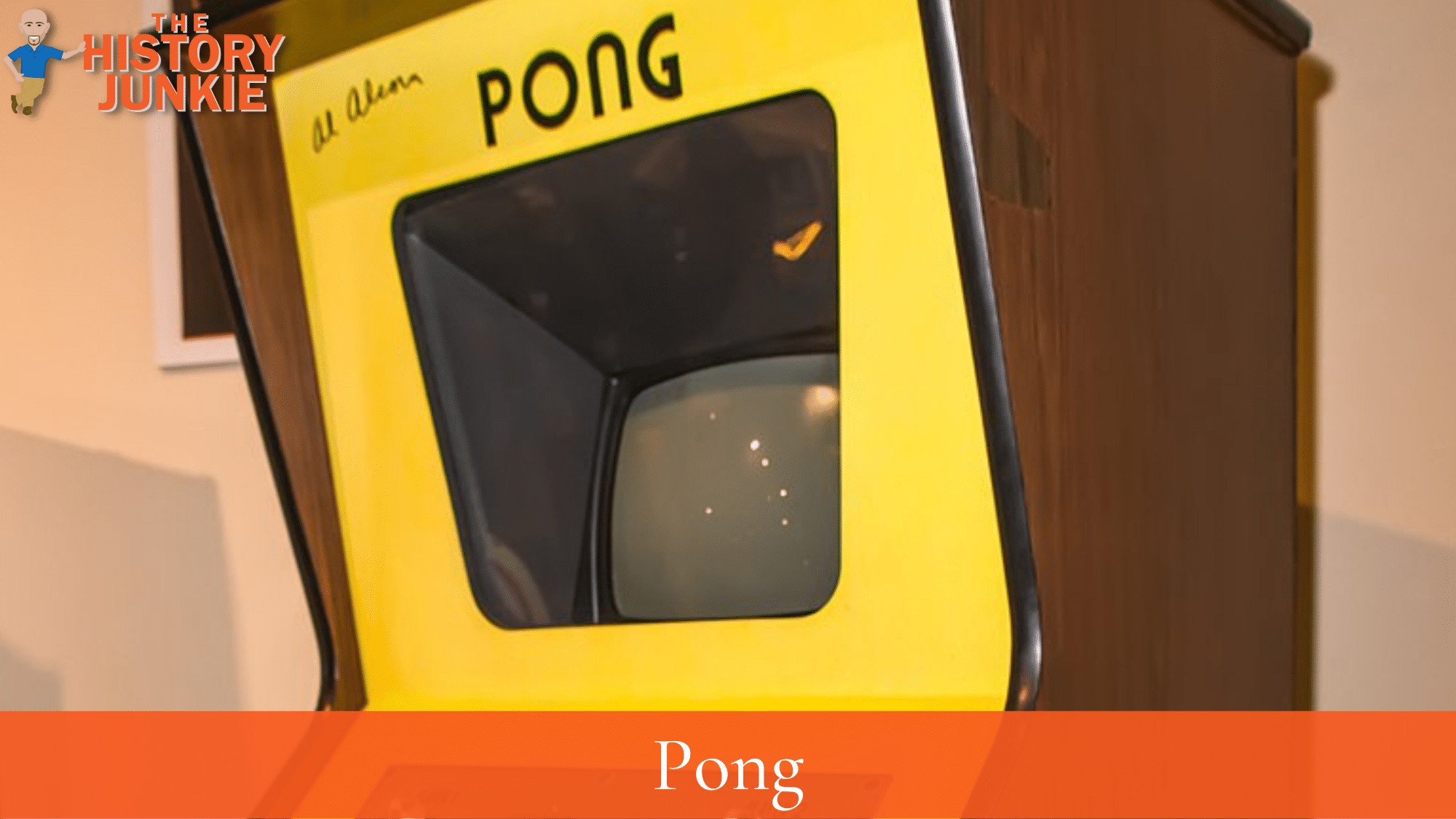
Arcade Pong - November 1972
Pong was developed by Al Alcorn and Nolan Bushnell and would be the first game to really begin the video game industry. Although this is a console timeline, Pong deserves mention because of its immense popularity and eventual port.
While the Odyssey was a nice try and a pioneer, Pong struck a nerve and had a large impact on the culture of the United States.
The key with pong was Alcorn's development of the ball hitting different angles, which allowed it to be more exciting. He also managed to build some sound effects.
Alcorn and Bushnell were young guys and tried out their prototype at Andy Capp's Tavern to see if it had any marketability. Alcorn received a phone call that the machine was not working properly, so he rushed to the tavern to inspect it.
He found out that it was not the machine but that so many people had played with it that the machine was overflowing with quarters.
Bushnell then decided that he could make more money if he sold it through Atari rather than licensing it out to other companies. It took a bit of time, but soon, Pong launched throughout the United States and became the most popular video game of its time.
There would be home versions of the game that began to lead to the creation of a new home console, the Atari 2600.
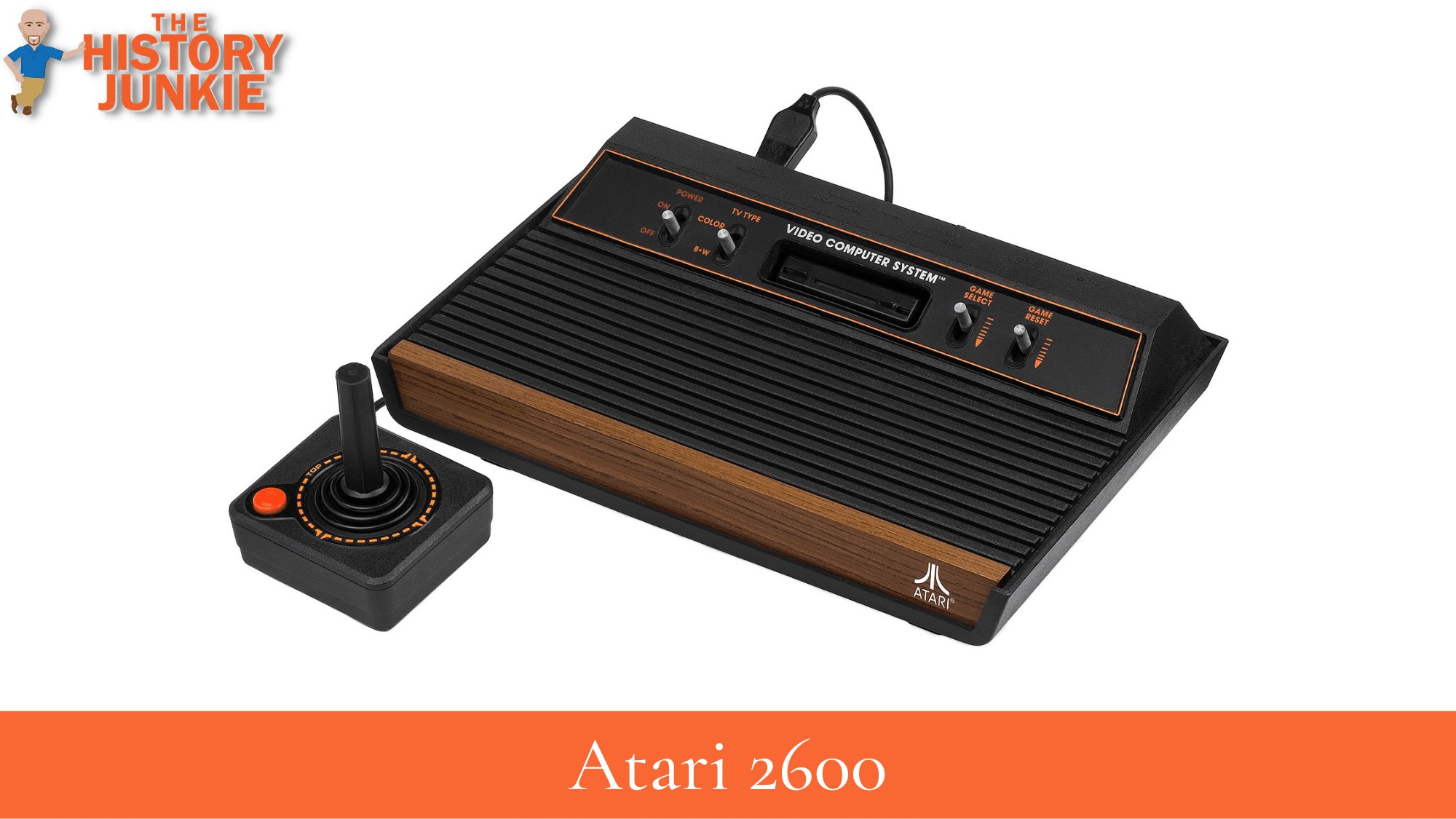
Atari 2600 - September 1977
The Magnavox Odyssey was a pioneer, but the Atari 2600 made the home console a common fixture in the house during the 1980s. Sure, it would also bring on the terrible Video Game Crash of 1983 due to the production of terrible games that saturated the market, but that would occur 6 years after it hit the store shelves.
The controller was revolutionary, and the games were usually popular arcade games that were imported. I was still a bit young to remember everything about this system, but I do remember my uncles playing various games that had been purchased.
Its best-selling game was Pac-Man, which would go on to sell 8 million copies. Ironically, it would be Ms. Pac-man, who was also released for the Atari 2600, that would receive more critical praise.
The system was supported until 1992, which is incredible considering by that time, there were far superior systems that could be purchased.
The first commercial was launched in 1977 with the system.
The advertising would change through the years and focus more on children than adults. The system is now a collector's item, and finding one in mint condition is difficult.
Despite its success, the new console launched a console war with many other, more powerful machines getting involved.
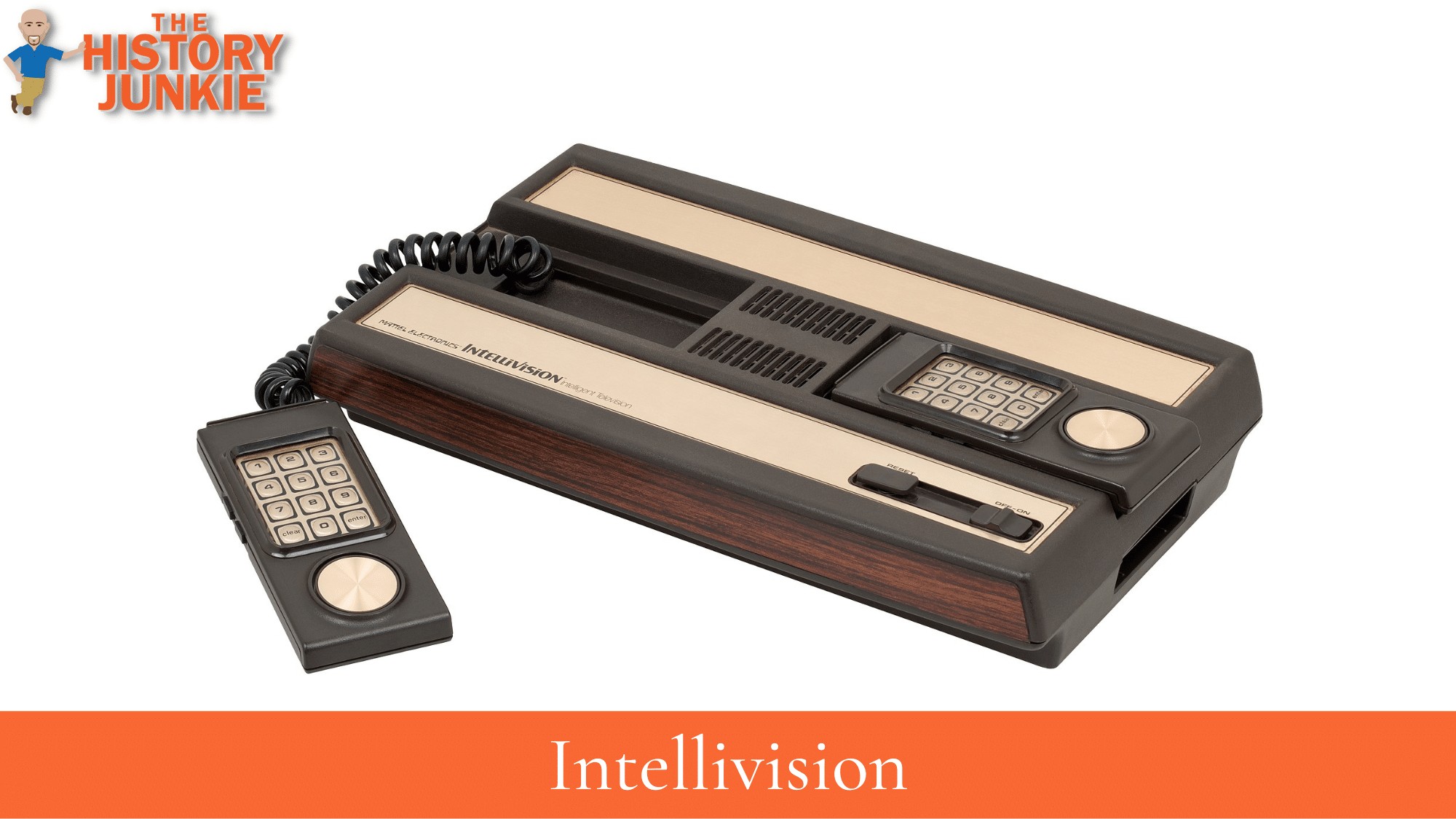
Intellivision - 1979
This is another console that was released before I was born, and it would be something that would give the Atari 2600 a one-two punch.
At its release, it was more powerful and had a variety of games. One of the more impressive things about this Mattel console was that the company pursued actual licenses from various sports leagues. They wanted to have an official NFL, NBA, NHL, and MLB game rather than just creating a game around the sport.
These licenses would help sell the console.
While many remember it, I do not. It was before my time, which means that Intellivision did not have the impact that the Atari 2600 did on the culture.
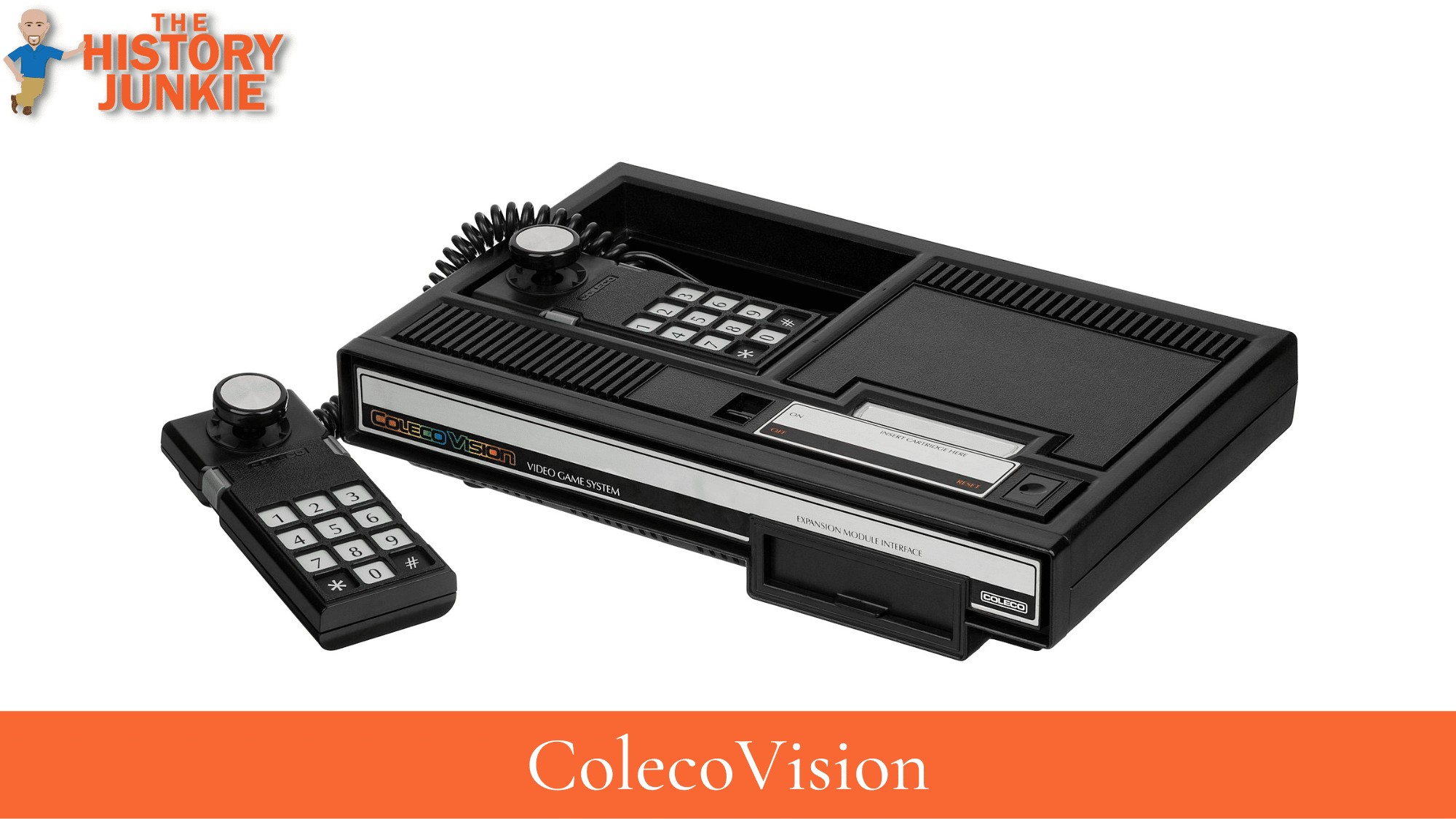
ColecoVision - August 1982
When the ColecoVision was launched, I was still in diapers, and by the time I could remember playing my first video game, the console had faded.
ColecoVision had its moment, though. When it was released, it was in direct competition with the upgraded Atari 2600 and the Atari 5200, and it outsold it by quite a bit.
The reason for its successful launch was that it was bundled with the popular arcade game Donkey Kong, which featured a character named Jumpman.
Jumpman would be renamed Mario and would become the most beloved video game mascot in the business.
ColecoVision was a huge influence on Nintendo, whose engineers were impressed with its smooth graphics.
The console seemed to have a successful formula, but the Video Game crash, coupled with the company's failed attempt at a computer, caused them to shift focus from ColecoVision to the popular Cabbage Patch Kids.
ColecoVision was no longer supported three years after it hit the market.
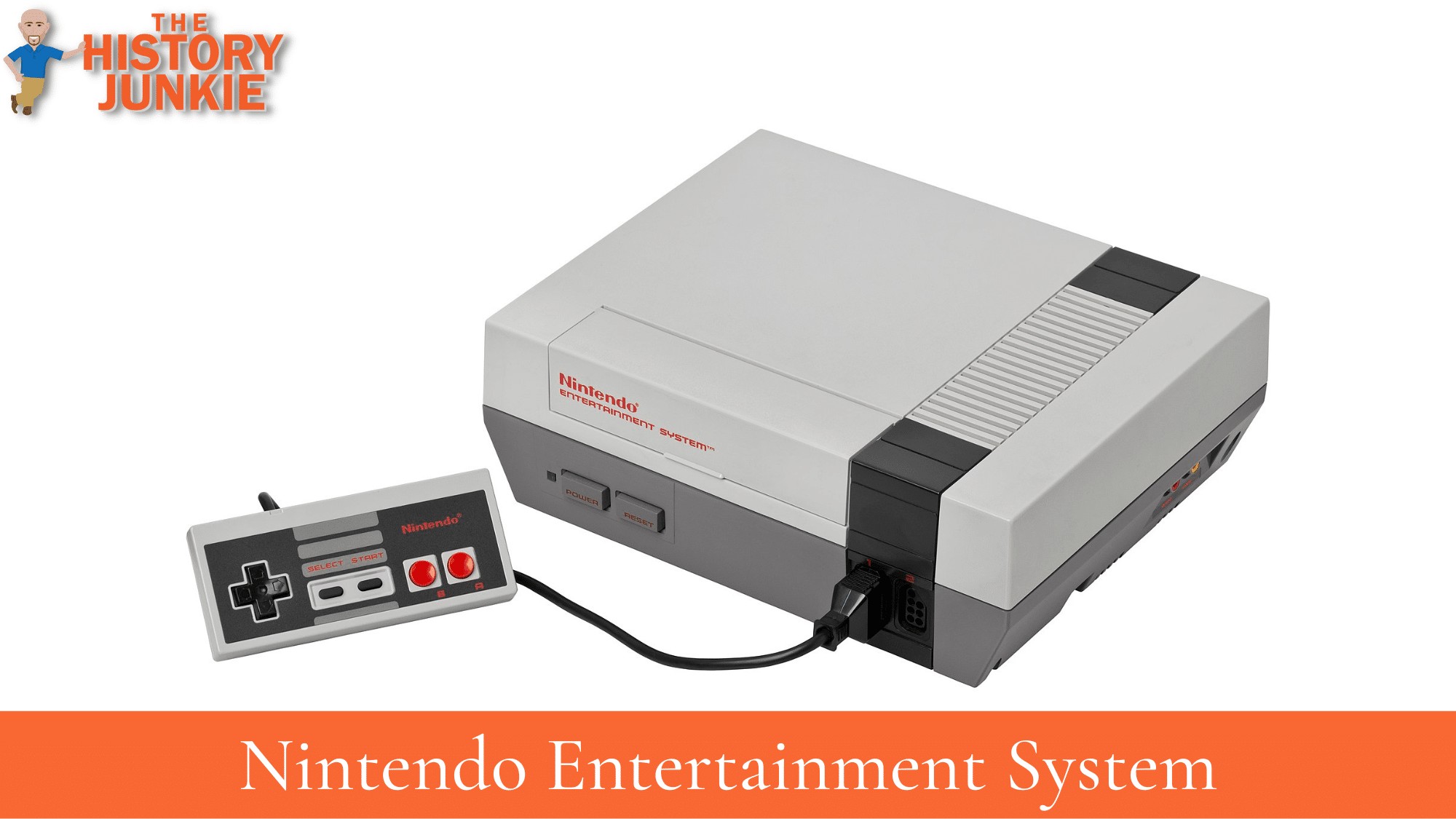
Nintendo Entertainment System - October 1985
The Nintendo Entertainment System is the video game console that turned me into a gamer when I was about 7 or 8 years old. I absolutely loved this system, and during those cold Ohio winters, I enjoyed sitting down at the television and playing some Mario, RC Pro Am, Wrestlemania, and many of the other choices that were available.
The neighborhood boys would trade games back and forth; I would head to the nearest Phar-Mor (a story that no longer exists) and rent games for 69 cents rather than at Major Video, which charged a couple of bucks.
As crucial as this console was to me as a kid, it was more important for the video game console industry.
The console industry had been flooded with poor-quality games, resulting in the consumer not wanting to purchase a game or a console.
The NES was first released in Japan and then brought to the United States. They put in place a tough licensing program that ensured the quality of the games.
It was a hit and ushered in a new era for Video Games.
It also came with additional add-ons such as the zapper gun, Power glove, and power pad. It had a long life with many fun games, but none of them were more successful than Super Mario.
The once Jumpman came into his own with his own platform game titled Super Mario Brothers. This series remains the most popular platform series in the history of video games.
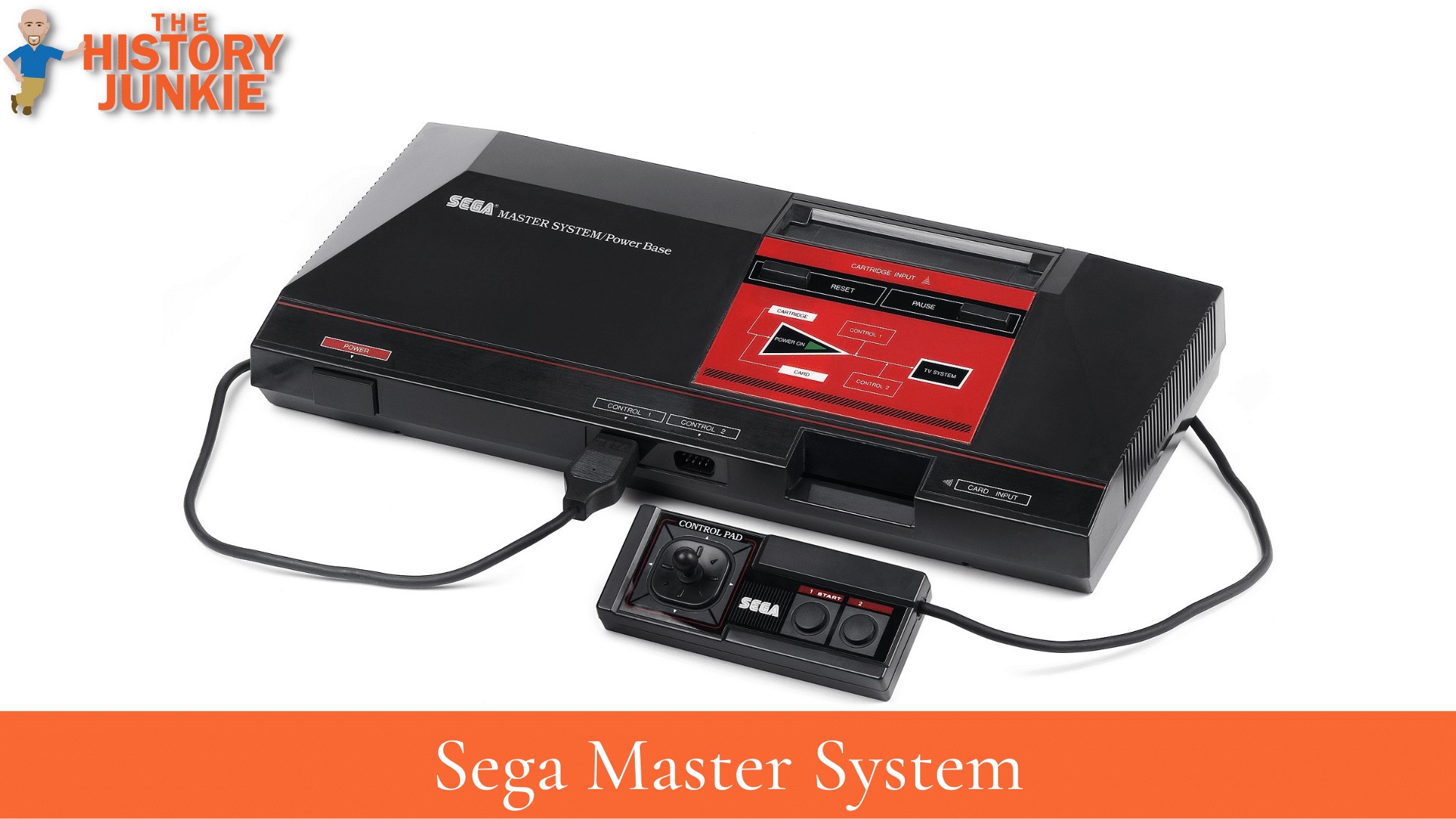
Sega Master System - September 1986
The Sega Master System was launched in North America the year after the NES, and it had some success. While it was more successful in Japan, it certainly had its following in the United States.
I never realized this console existed until I was older, but it was a stronger console than the NES and had an impressive game library.
A game that I heard about when I got older was Phantasy Star, which had its first installment on the Sega Master System. The game is still around and remains popular.
While the Master System did not dethrone Nintendo, despite the better graphics, it laid a foundation for Sega, and they would find more success in the next generation of consoles.
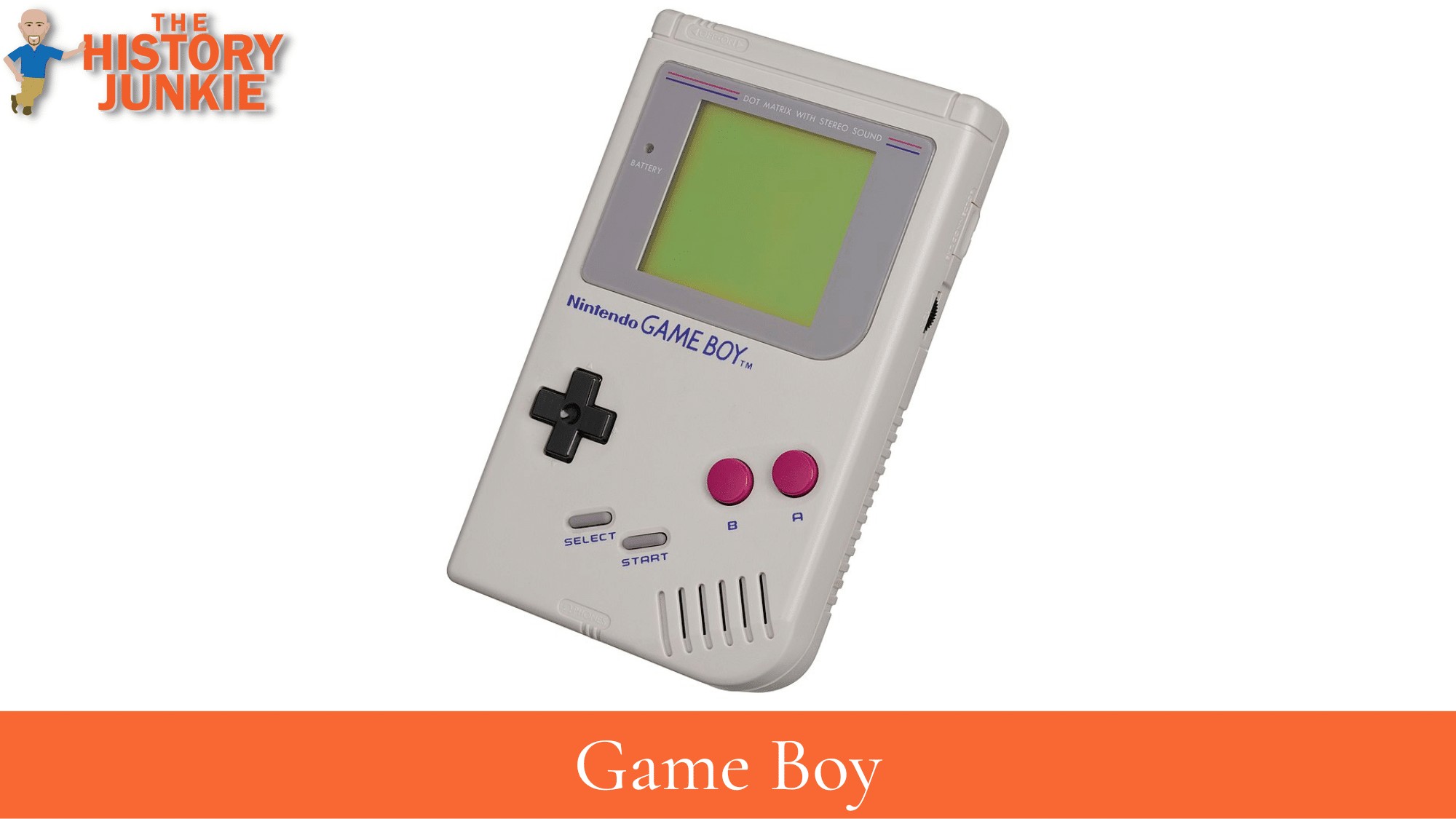
Game Boy - July 1989
The Game Boy was another Nintendo creation that changed the game. After finding much success with the release of the NES, Nintendo released a portable device that allowed players to play games on the go.
The graphics were average, but that is what many were used to when you consider all the handheld games that were out at the time.
What made the Game Boy great was the list of games that it had. It was packaged with Tetris, which made it an instant classic. It also had different Mario games as well as introducing Wario, which was Mario and Luigi's evil older brother.
Some other classics were Zelda: Link's Awakening, Pokemon, and Final Fantasy Adventures.
Despite its limitations, it managed to stay more popular than Sega's Game Gear, which had a color screen.
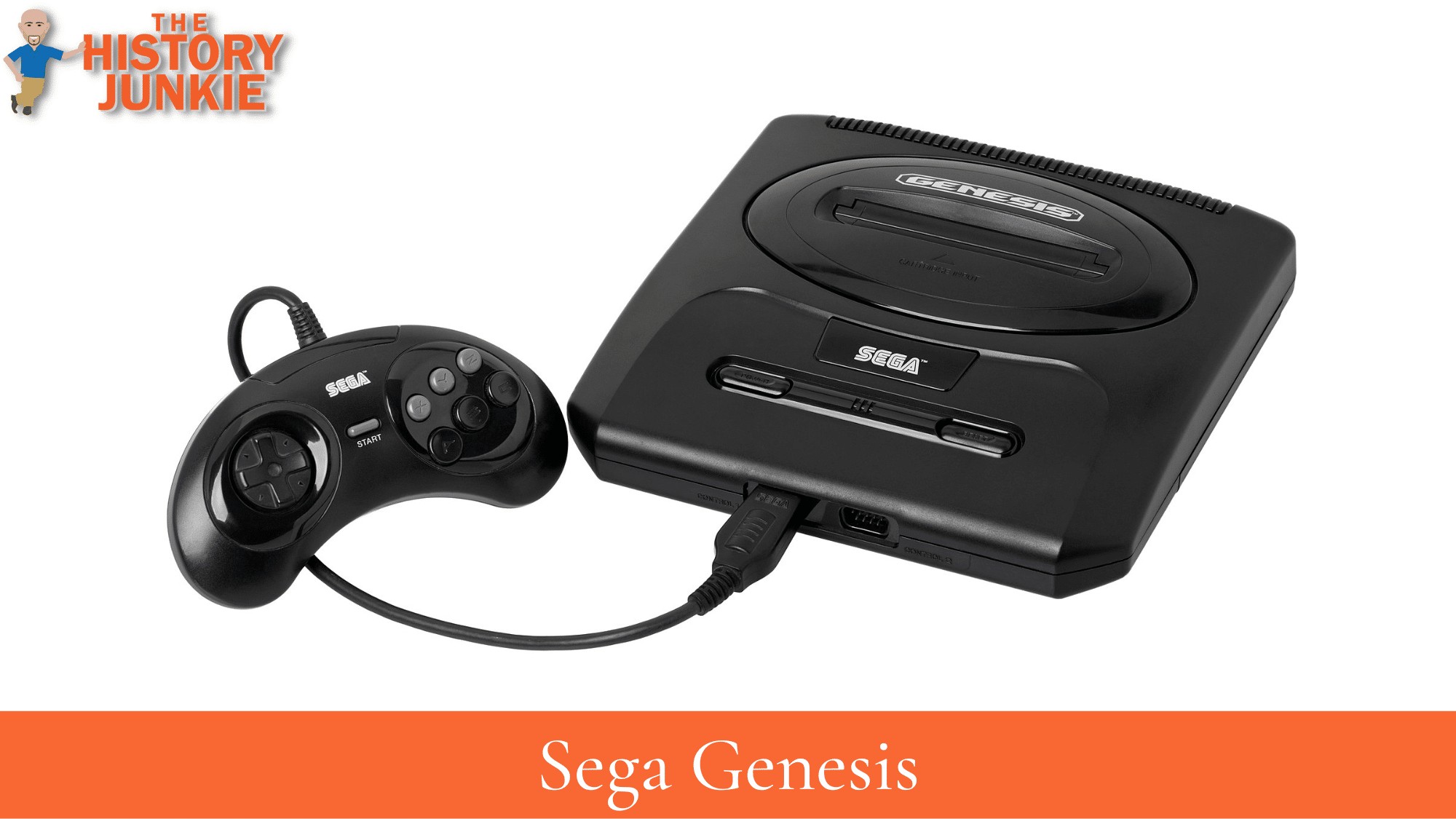
Sega Genesis - August 1989
The Sega Genesis was the system that gave Nintendo some stiff competition. While the system struggled to gain market share in Japan, it became extremely popular in the United States.
This was due to its marketing. The Genesis marketed to a more mature audience and tried to portray itself as a more hip option than Nintendo.
Sonic the Hedgehog went up against Mario. Sonic was fast and had an attitude, and he remains the only platform star that dethroned Mario in my life for a short period of time.
Mortal Kombat was released on the Genesis, and it had blood squirting out of the characters, and eyebrows were raised. The Super NES version did not have blood.
This caused Sega to implement a rating system for their games, which eventually led to the creation of the ESRB.
Sega tried to raise the bar with add-ons as well. The 32X and Sega CD helped enhance the graphic capability of the games.
The Genesis never dethroned the Super NES in the market, but it gave Sega a fanbase that would carry on and would help them when they released the Sega Saturn.
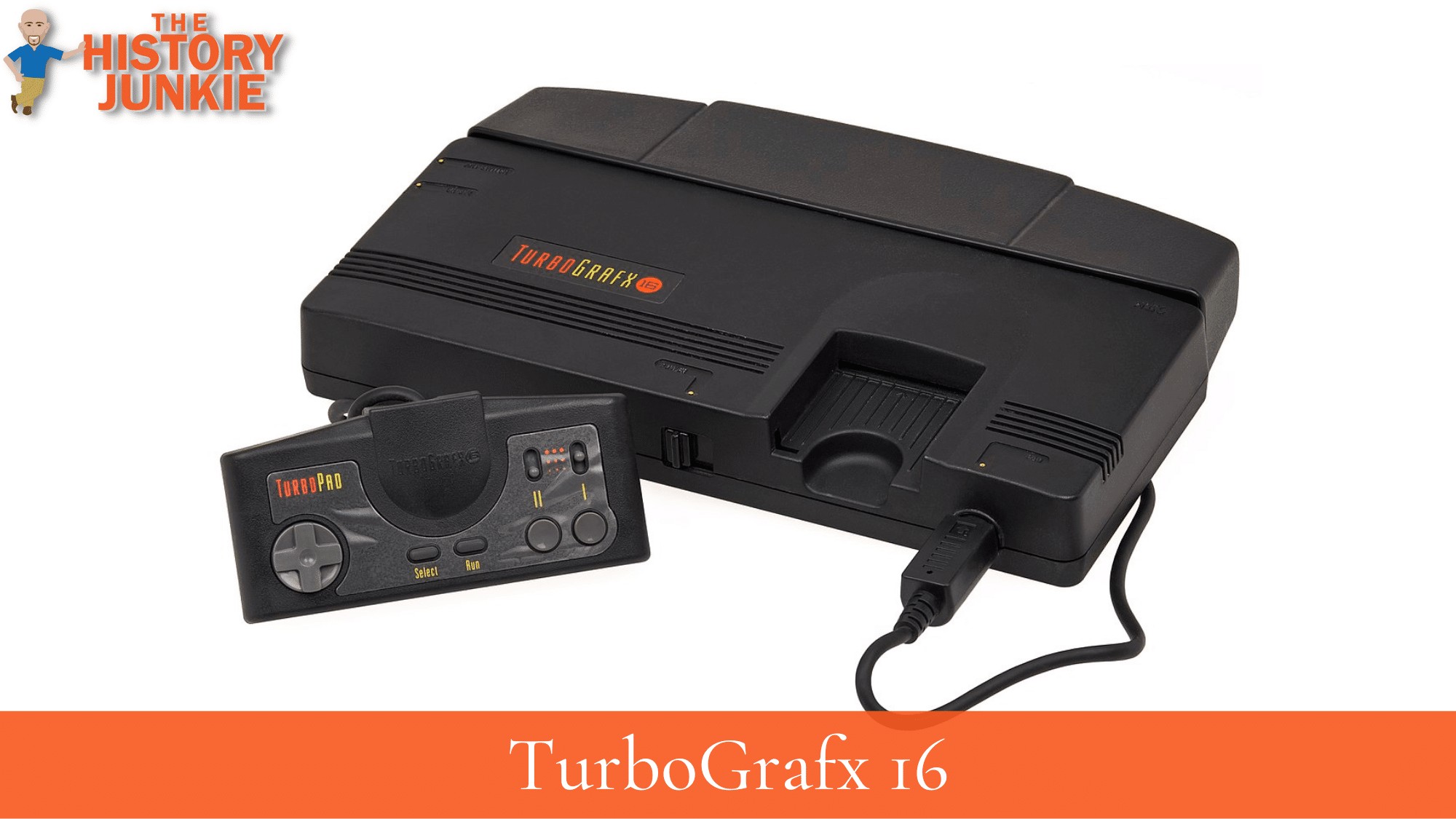
TurboGrafx 16 - August 1989
I remember hearing about TurboGrafx 16, but I do not remember anyone owning one. While it did great in Japan being marketed as the PC Engine, there were some issues with getting the system launched in the United States, and by the time they did, Sega had already launched the Genesis.
It hit the United States in Quarter 3 of 1989, and it stumbled out of the gate. While its graphics were the best anyone had seen at that point, it was packaged with a game that folks in the States did not know.
It goes down as one of those consoles that had the potential, but poor timing and a bad launch doomed it.
I give it a mention in my timeline because, technically, it was the first console of the 16-bit era to be launched since it came out in Japan before Sega's 16-bit console. However, the Sega Genesis, making it first to market in the United States, crushed the system.
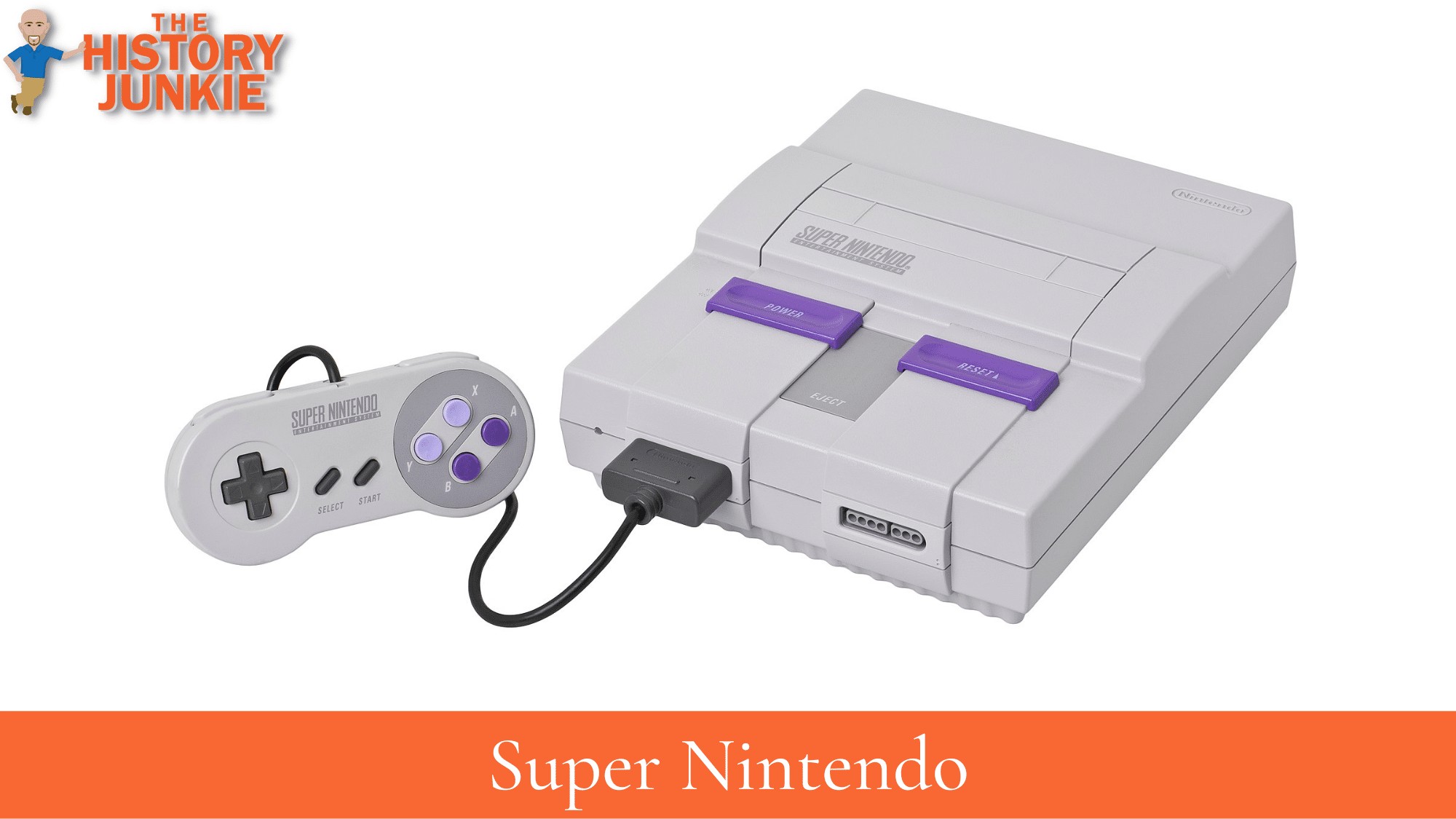
Super Nintendo - August 1991
When the Super Nintendo hit the shelves, it came in like a firestorm. After building off the success of the original NES, the Super NES came with better graphics and a nice library of games at launch.
It would immediately cut into the Sega Genesis market share and never look back. Super Mario World, Zelda, Star Fox, F-Zero, Donkey Kong Country, and the list can go on with the many successful games that Nintendo released. Looking back, the list of games is quite incredible.
What I remember most about the Super NES, and this occurred later on in its life, was the Role-playing games that came out for it. Games like Final Fantasy, Chrono Trigger, Super Mario RPG, Breath of Fire, Illusion of Gaia, and Earthbound are just a few of the popular titles (Earthbound took a bit to catch on).
The Super NES still did well even after the release of the Sega Saturn and Sony Playstation. Donkey Kong Country and its sequels were released to great reviews. It is astounding how well this system held up.
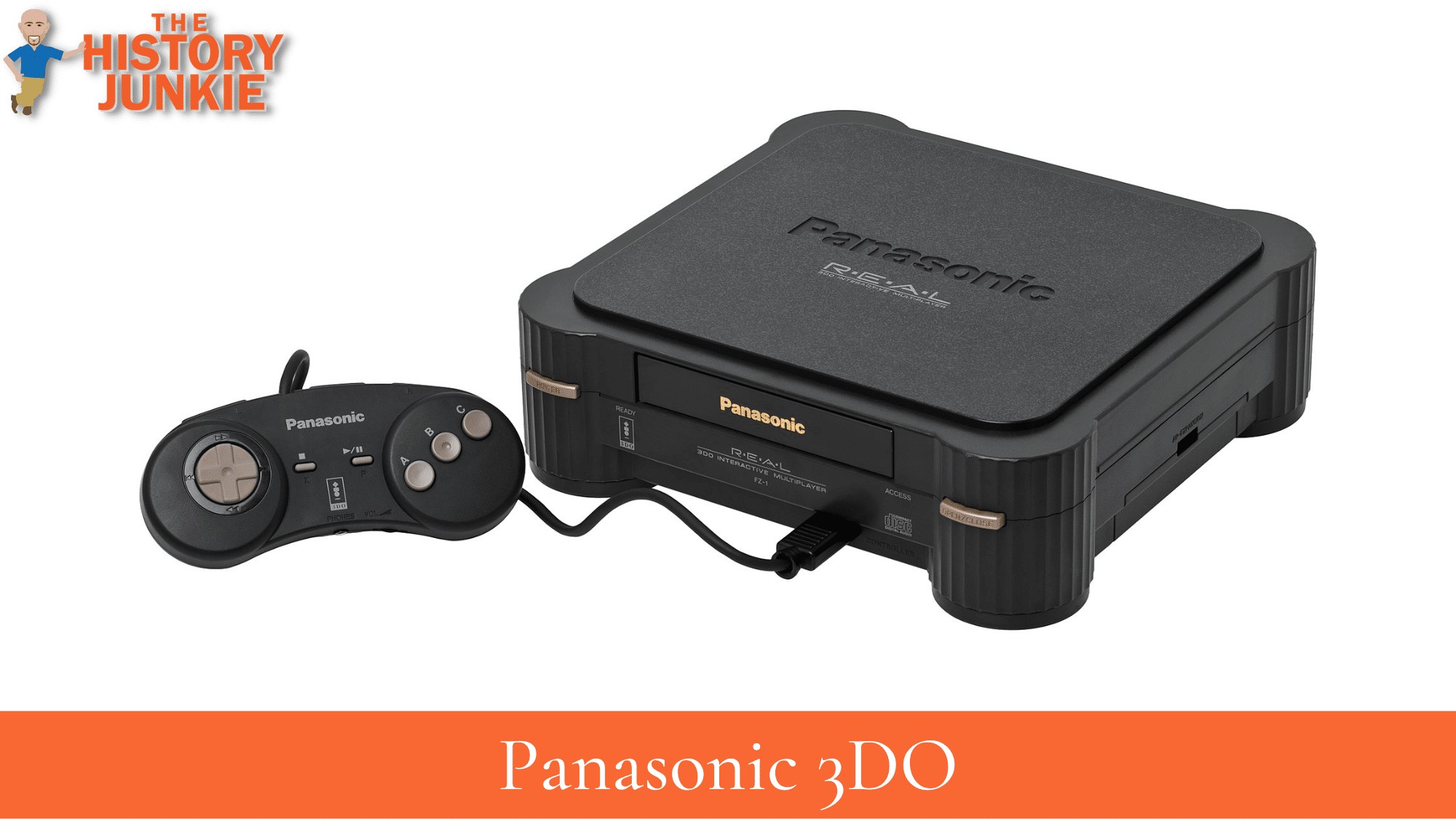
Panasonic 3DO - October 1993
I remember playing Gex on the 3DO at the local Meijers in Sandusky Ohio, when it came out. I remember thinking about how cool it was, and then I saw the price tag.
The 3DO cost $700 in the 1990s, and therein lies the problem with the 3DO. Despite its cutting-edge technology, the price tag was too high.
Considering that the Sega Genesis and Super Nintendo were selling their consoles for around 90 bucks at the time and were producing extremely fun games, the 3DO went the way of the Jaguar.
It was never competitive, and although they did produce some excellent games, such as Star Control, the titles just didn't have the draw of Mario or Sonic.
A year after its release, Sony Playstation and Sega Saturn, the title of the most powerful system, was taken away from the 3DO. It was soon sent out to the pasture.

Atari Jaguar - November 1993
Then there was the Jaguar with its controller that had a number pad on it.
The Jaguar claimed to be 64 bits and was released at a time when 16-bit machines dominated the market. Yet the games that were released with the system did not look as good as the games on the Super NES or Genesis.
I don't even know who sold this console, to be honest. Perhaps Babbages or Toys R Us did at the time, but I never saw it. The first time I remember seeing it was in a GamePro magazine giving out end-of-the-year awards, and I saw that Rayman for the Jaguar received its best game award. That should tell the tale right there.
Some of its best games were Wolfenstein 3D, Doom, and Alien vs Predator. I do not know about AvP, but I know that Doom and Wolfenstein were popular on the PC and had better graphics.
The Jaguar sums up Atari's fall from the video game console wars. It never produced consistent quality games. The Ataris of the 80s caused the Video Game Crash of 1983 due to saturating the market with terrible games, and Nintendo fixed this by creating a standard for quality for the NES Atari never adjusted.
Atari, under Nolan Bushnell, was innovative, but after he sold the company, they could never rekindle the magic.
The Jaguar was only supported for 3 years.

Sega Saturn - May 1995
The Sega Saturn was Sega's leap into the fifth generation of video games and would spell the beginning of the end for the company that took a big bite out of Nintendo's market share.
The problem with the Sega Saturn was not its power or its game library. The problem with the Sega Saturn was terrible marketing, a botched launch, and a focus on the wrong opponent.
The system did well when it was released in Japan and was outselling Sony. The problem came to the United States.
It is hard to believe, but Sega was concerned with the doomed Atari Jaguar and pushed up its launch date. It was supposed to be a fall launch, but instead, it shipped in May. This alienated big retailers such as Walmart, Best Bay, and KB Toys.
KB Toys was so angry that they dropped the console from their store completely.
Pushing up the launch also caused games to be rushed, and what could've been an excellent lineup of games in the fall, the Sega Saturn only had a few.
It was one bad move after another, and it broke Sega's back. They would not be able to compete with Sony, and after Nintendo released the N64, they would be wiped away.
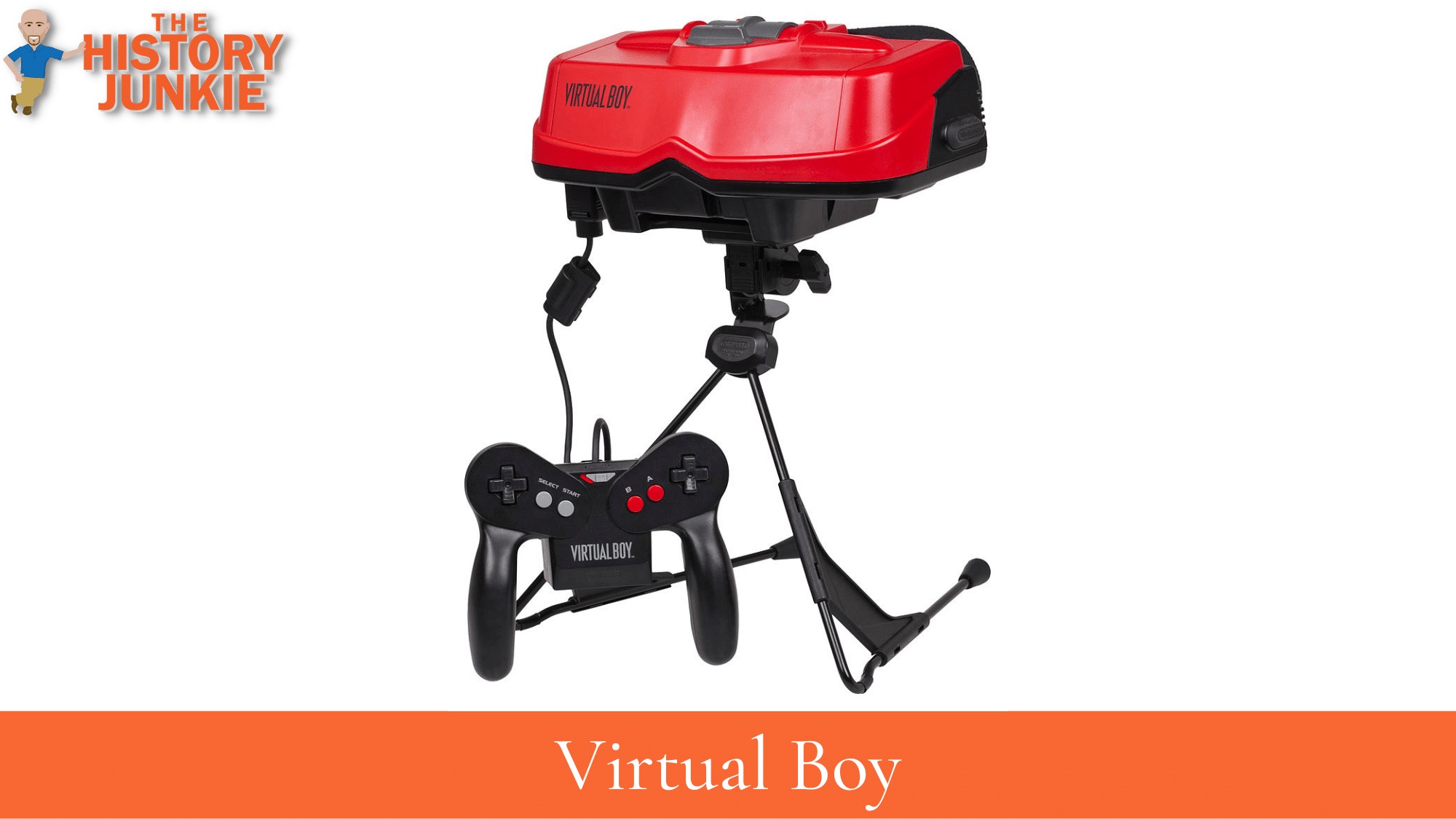
Virtual Boy - August 1995
Every business has decisions they wish they could take back, and Virtual Boy is one of those decisions for Nintendo.
Virtual Boy was supposed to emulate virtual reality, except that you couldn't move the headpiece, and the graphics gave you a headache. It was physically uncomfortable to play.
I remember being in Walmart and testing out one of these bad boys. It seemed pretty cool at first, and then about 5 minutes later, I wanted to play something else. That is how I see the virtual boy. It was just not sustainable to play for long periods of time, and when I sit down to play a video game, that is what I want to do, especially back then.
Virtual Boy was the only console that Shigeru Miyamoto did not have much to do with, and it is easy to see why.
It may seem cool to have as a fixture or to play now because it is different, but at the time of the Sega Saturn and Playstation, nobody cared about it.
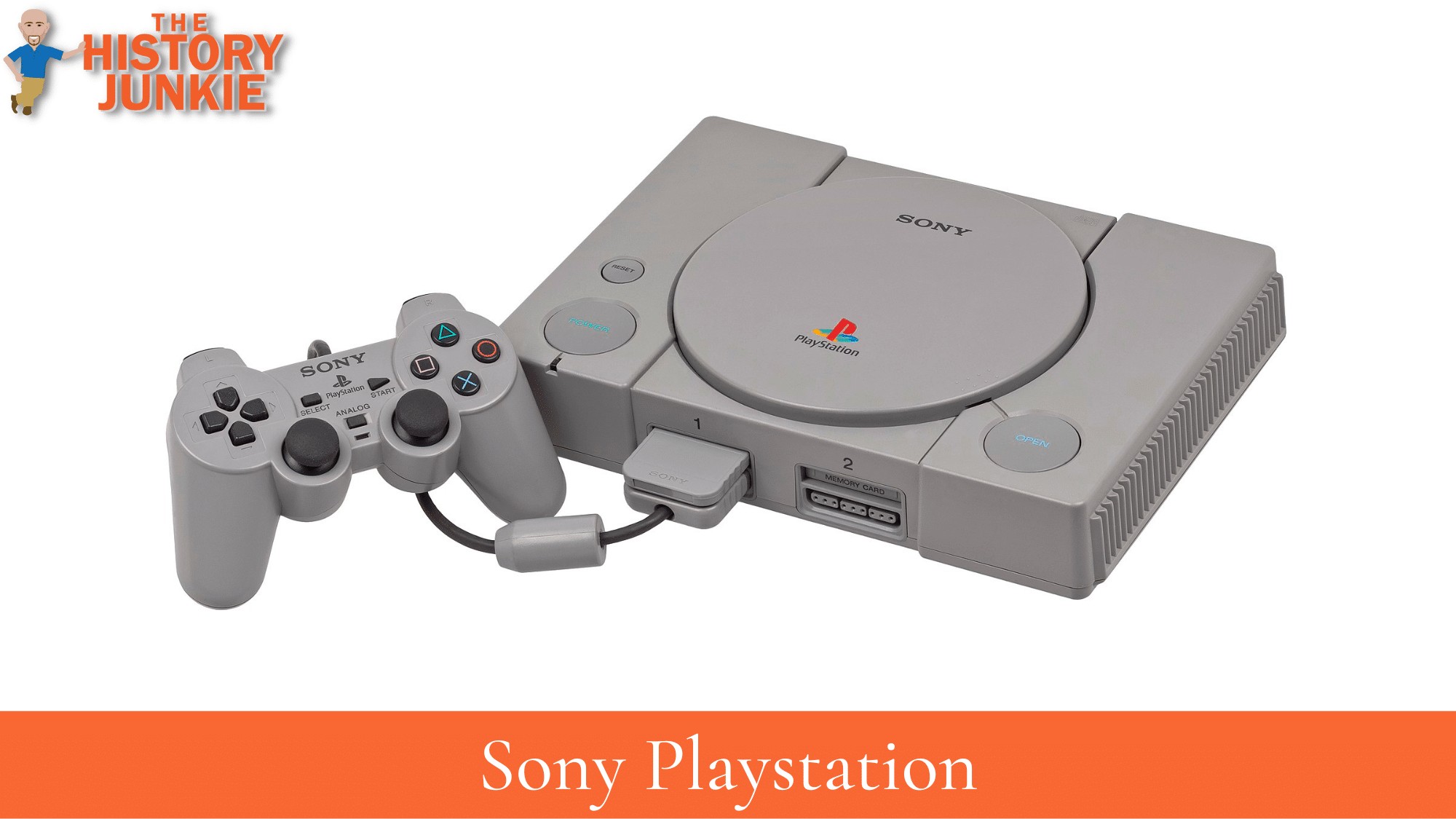
Sony Playstation - September 1995
The PlayStation was originally a partnership between Nintendo and Sony. It was going to be a CD add-on to the Super NES, but Nintendo did not like the contract because they believed it gave Sony too much control over the Super Nintendo.
I think Nintendo made the right move because they wanted to remain exclusive, but they did not realize how good Sony would be in the video game market.
The Playstation changed everything. It became the dominant console with a list full of mature games such as Resident Evil, Fear Effect, Medal of Honor, Metal Gear Solid, Twisted Metal, and the list goes on.
They also had an exclusive relationship with Square, which gave them Final Fantasy Tactics, Final Fantasy VII, Final Fantasy VIII, and Final Fantasy IX.
They replaced the Super Nintendo as the go-to console for Role Playing Games.
As for me, I was a loyal Nintendo fanboy. I had crossed over to the Genesis but had since moved back to the Nintendo camp. I did not buy a Playstation but waited for the Nintendo 64.
The N64 came out, and I was content with it for about 6 months. Then I wanted to play something other than Mario and Star Fox and the other exclusive Nintendo titles. I had been a Nintendo gamer since I was 8 years old, but now I was 15 and enjoyed the darker games.
I left Nintendo for Sony, and I have never looked back. I remain a loyal Sony supporter to this day, although I don't have much time to play video games these days.
The PS1 would usher in a new era of video games.
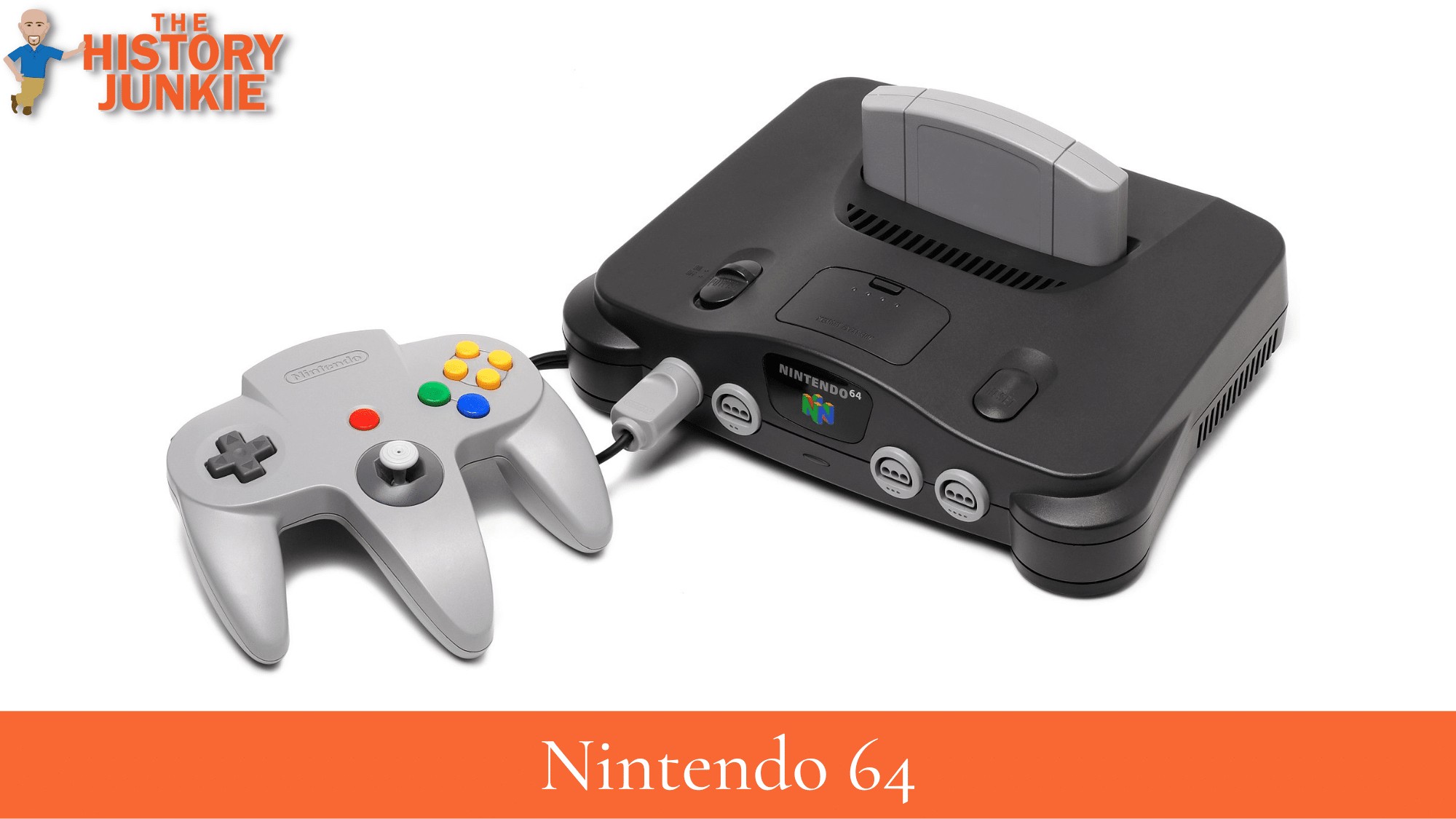
Nintendo 64 - September 1996
I used to get into heated debates when I was a freshman in high school over which console was better: the Sega Saturn, Sony Playstation, or Nintendo 64. Looking back, I think it is a bit sad that I was more concerned with a video game console than the beautiful girls that were in my class, but I guess that would come with time.
I was a Nintendo fanboy at the time, and I saved money to purchase the N64 when it was released on September 29, 1996. I remember calling every store only to hear that they were sold out, and then I called Sears, thinking I would hear the same thing, but the lady on the other end said they had 1 left.
I was 15 minutes away from the store, but the kind lady placed it to the side and reserved it for me. I bought it and then proceeded to go home and lose myself in Mario 64 for about 3 weeks. Every day, I would come in and update my fellow classmates on how many stars I had gotten the night before. Wow, even typing this makes me feel sad for that 15-year-old kid.
While the N64 was a great machine and gave me many memories with friends such as Goldeneye 007, it would struggle to catch on with my age group. Within a couple of years, I moved on from the N64 to the PlayStation due to its lack of mature titles and role-playing games. I had simply outgrown Nintendo.
The system is still considered one of the best in history, and it would see the launch of the Pokemon series, which is still popular today. Zelda, Mario, Mario Kart, and so many other games would become instant classics and are still viewed as some of the best games in history.
Super Mario 64 still holds a special place in my heart. It was the first fully 3D game I played, and was incredibly fun.
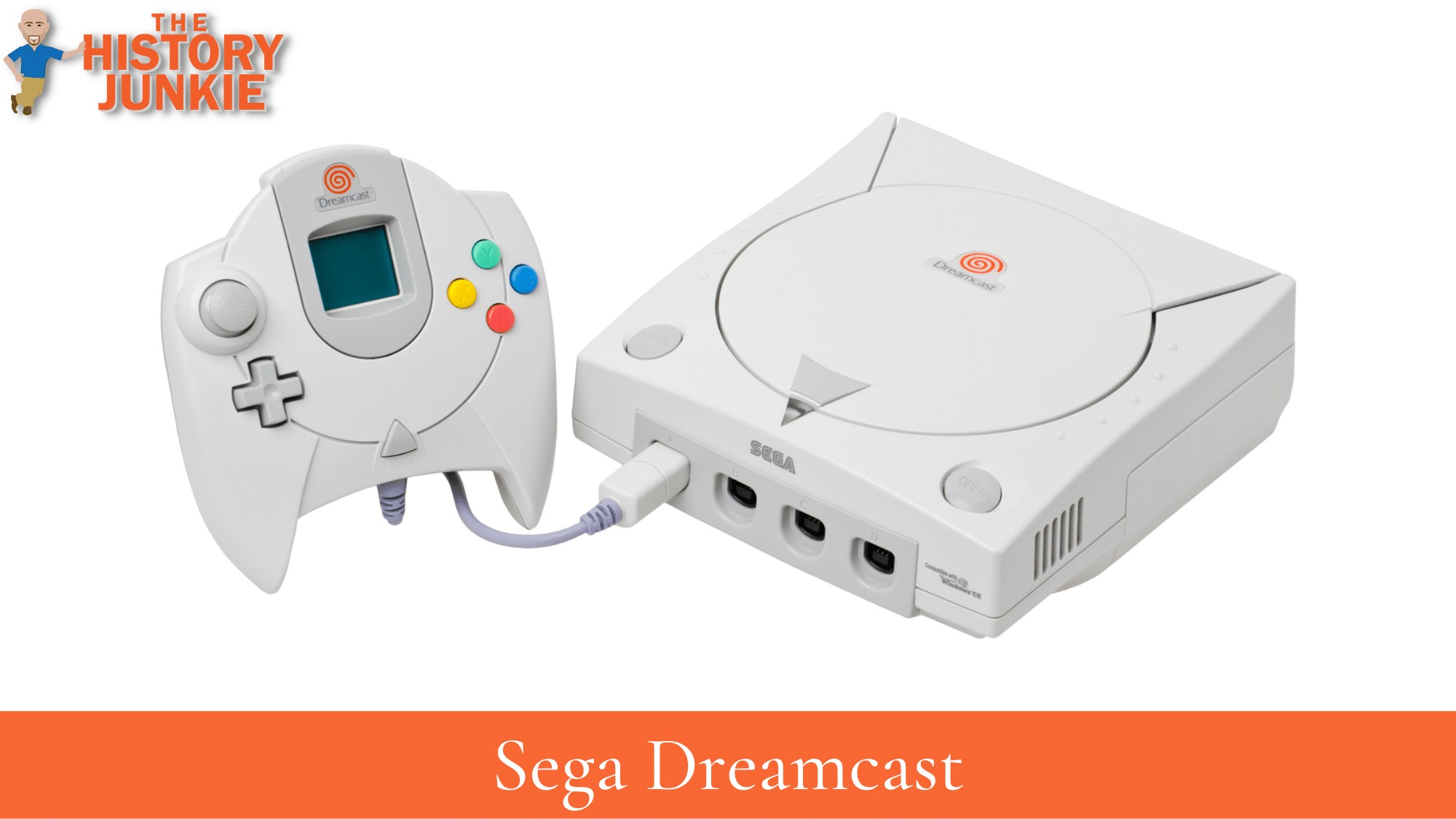
Sega Dreamcast - September 1999
The Sega Dreamcast launch was a much more successful launch than the Sega Saturn. Sega had gone out of its way to repair its relationships with various retailers in order to be the first to launch its 128-bit machine to market first.
When it arrived in North America, it was met with much excitement. Sonic Adventures was extremely fun, and the NFL 2K series was impressive and looked better than Madden.
However, it just never resonated with a lot of people. At the time of its arrival, I did not have any desire for it. At that point, I had transitioned and preferred RPG games over the platform. While I did enjoy the NFL 2K series, it was not enough to get me to bite.
The Dreamcast would be the last console Sega brought to market, and afterward, they would focus on creating games rather than the console, which has led to many great crossover games.
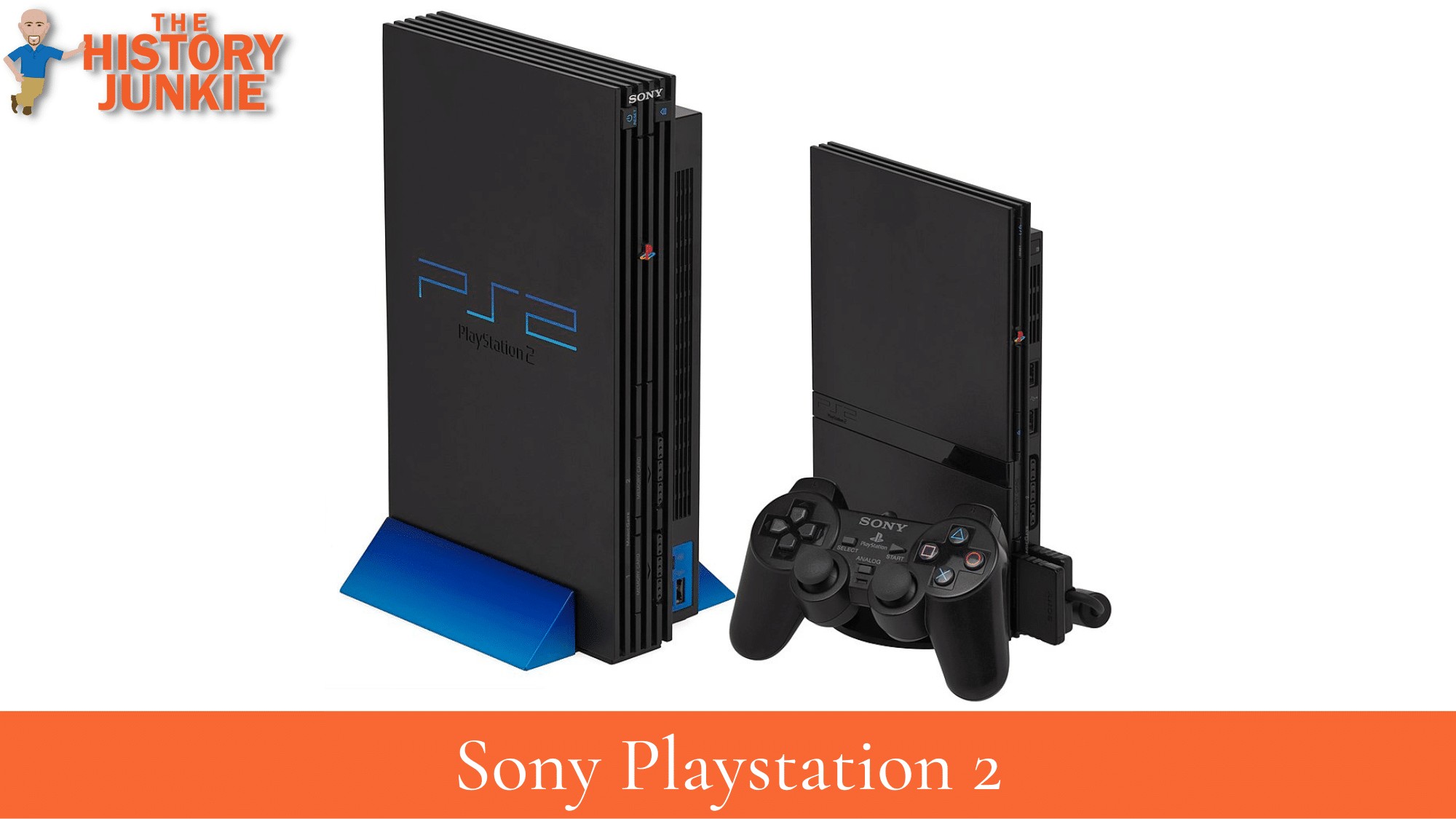
Sony Playstation - October 2000
The Sony PlayStation 2 will rank as my favorite system of all time, and I do not think that title will ever be taken from this console.
The original NES provided me with many memories growing up, but the PS2 came out during my college years. I first purchased mine after returning from Christmas break in 2002 when a friend of mine loaned me the money to purchase it.
What followed was about 4 years of crazy fun, lost sleep, slumping grades, skipped classes, vicious arguments, and many laughs. Tekken, Grand Theft Auto, NCAA Football, Final Fantasy, Suikoden, and so many other games that I cannot list them here.
The system cemented Sony's place in the Video Game market as the top dog. The Xbox would release a year later, and begin these two behemoths would begin to battle it out for years.
The PS2 also allowed players to get online and challenge others across the globe. Once again, this caused even more loss of sleep and missed classes.
Another great feature that the PS2 had was its backward compatibility, so I could play my extensive PS1 library on the system without the need to have another console plugged up.
Just writing this floods my head with so many memories.
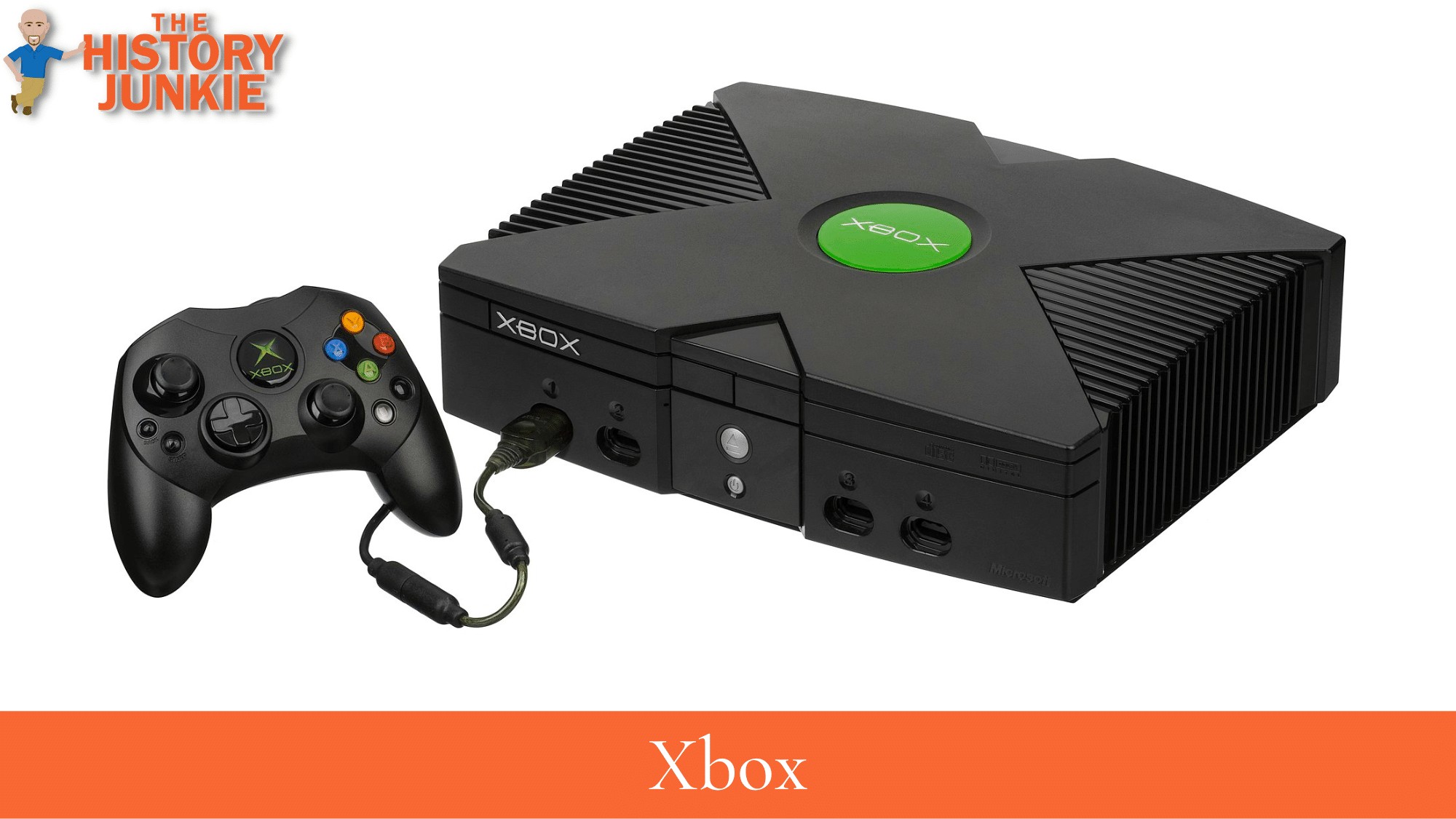
Xbox - November 15, 2001
When the Xbox launched, I was a freshman in college, and I remember it quickly selling it out and then seeing it on eBay for $800. Now, that price doesn't shock me as much, but then it was unbelievable.
Xbox was Microsoft's introduction into the Console wars, and they entered due to the home console beginning to compete with the PC.
The Xbox was an initial hit due to its launch game of Halo, but within a year, it began to slow down. It never did well in Japan and could never match PS2's lineup of games. The Grand Theft Auto series, which was the most popular game at the time, was released on the PS2 before the Xbox due to Sony's deal with Take Two.
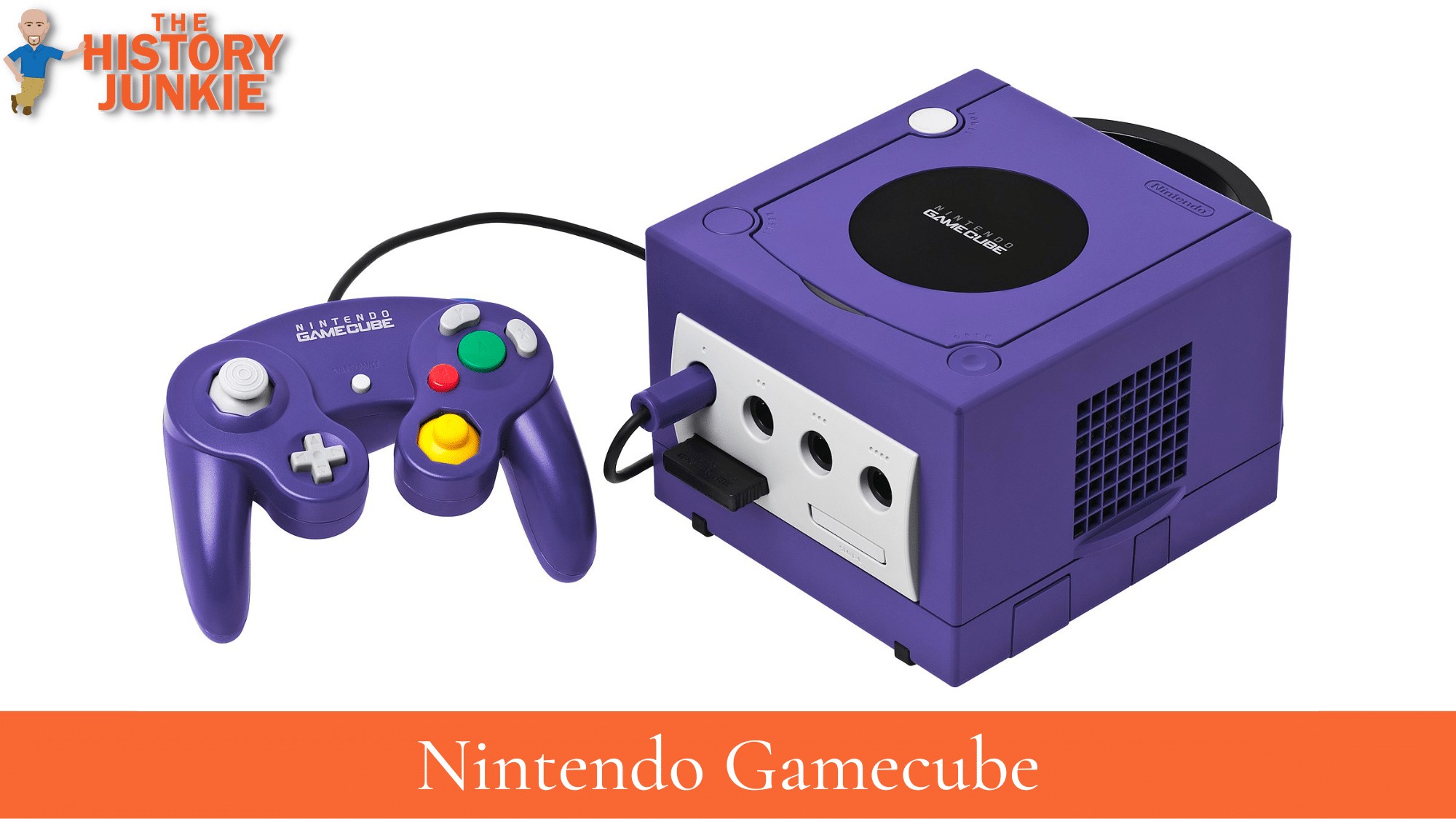
All in all, it was an excellent machine and a nice first jump into the console wars for Microsoft.
Nintendo Gamecube - November 18, 2001
The Gamecube was released just after the Xbox with many great games and some decent success, but the system was a disappointment by Nintendo's standards.
I owned one of these, and it was a nice alternative to my PS2 when I wanted to switch up the games. The Gamecube offered games that were not available on any other systems, like Mario, Zelda, and Metroid.
The Xbox outsold the Gamecube, and the PS2 dominated this generation of consoles by taking a commanding lead in the market share.
Nintendo would regroup and make improvements to compete much better in the next generation.
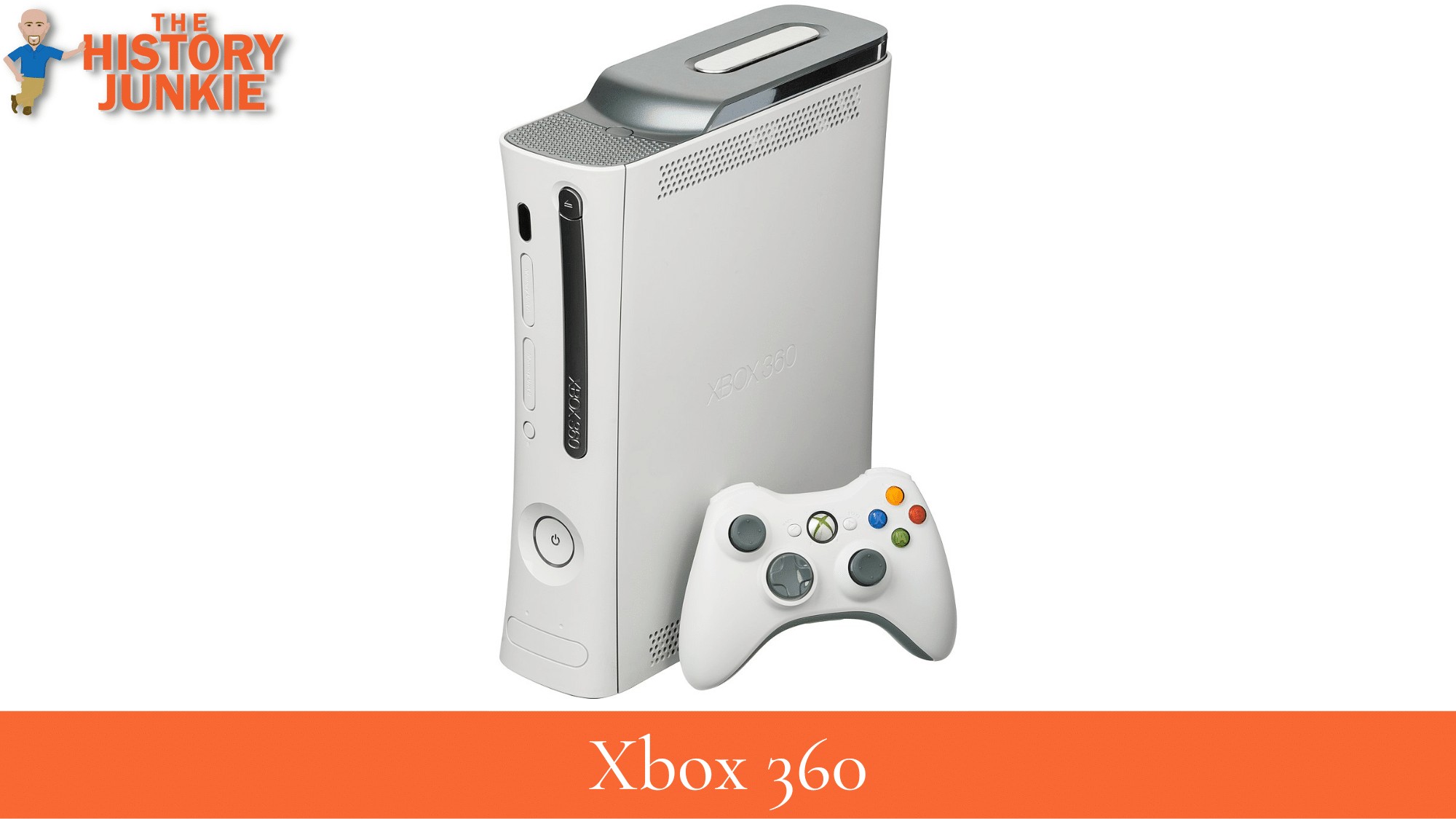
Xbox 360 - November 2005
The Xbox 360 kicked off the seventh generation of consoles when it launched on November 22, 2005. It was a successful launch, and the Xbox 360 built on its previous console well with Xbox Live.
Online play was becoming extremely popular and beginning to show a trend. The only issue with the first generation of this console was the hardware, which seemed faulty. The "red ring of death" would occur, and the Xbox 360 would need to be replaced.
Xbox would fix this problem, but it was an annoyance at the beginning.
I purchased this console, and during this generation of consoles, it and the Wii would be the only consoles I would purchase. For whatever reason, I was not impressed with the PS3 and skipped it during this generation, although it would ultimately outsell the Xbox 360.
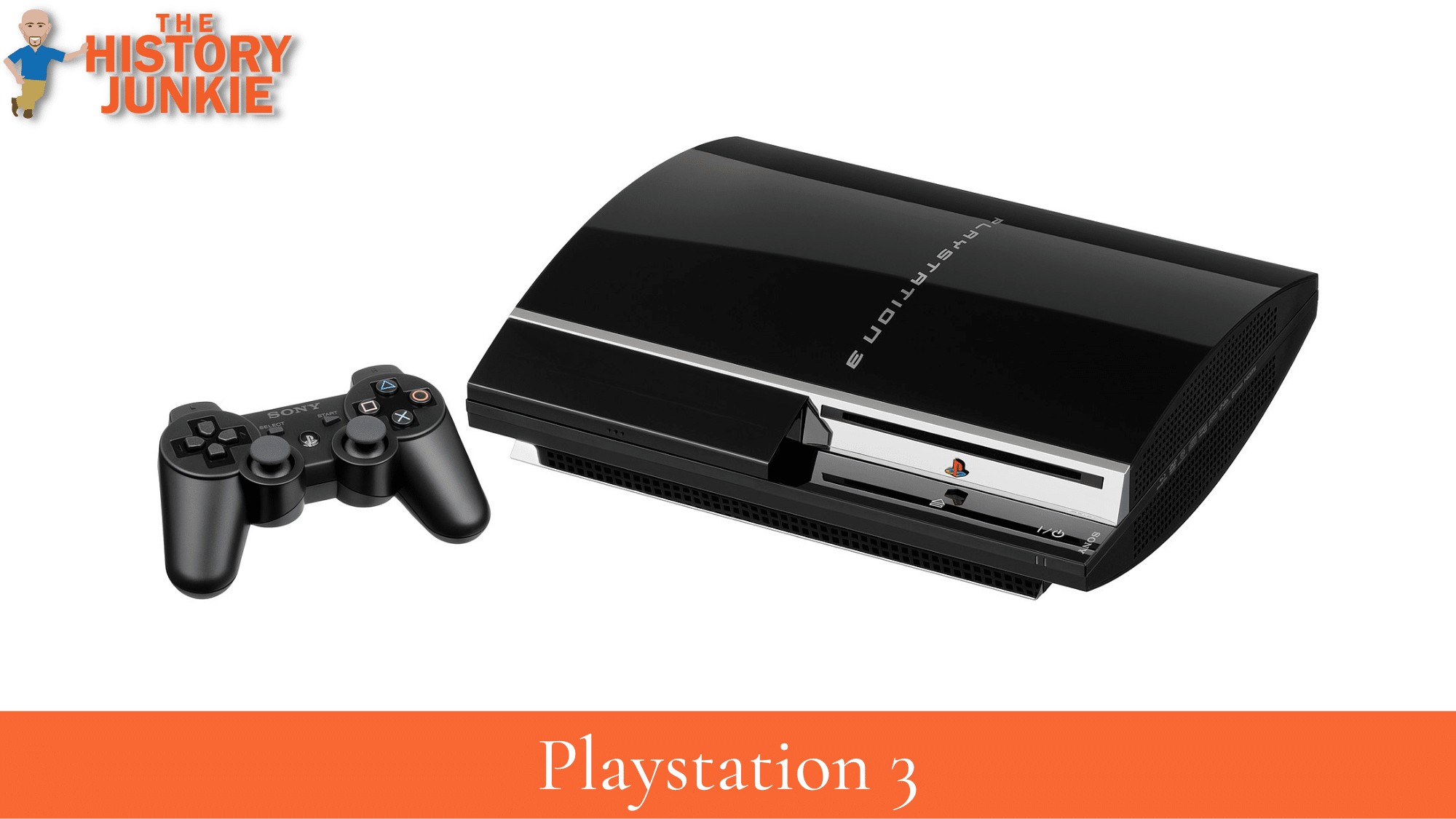
Playstation 3 - November 17, 2006
The Playstation 3 just edged out the release of the Nintendo Wii by a couple of days in 2006. When it arrived, it was considered a technological beast and was the first console to use Blu-Ray technology.
The PS3 did not see the success that the PS2 had. It was meant with some criticism and struggled in sales initially. It had a high price point and was considered to be too large. It gained momentum throughout the generation.
I personally did not purchase the PS3 due to its price point and instead went with an Xbox 360. Most of the games I enjoyed were on the 360 anyway.
The PS3 did see a surge towards the end of the generation and managed to pass the Xbox 360 in global sales.
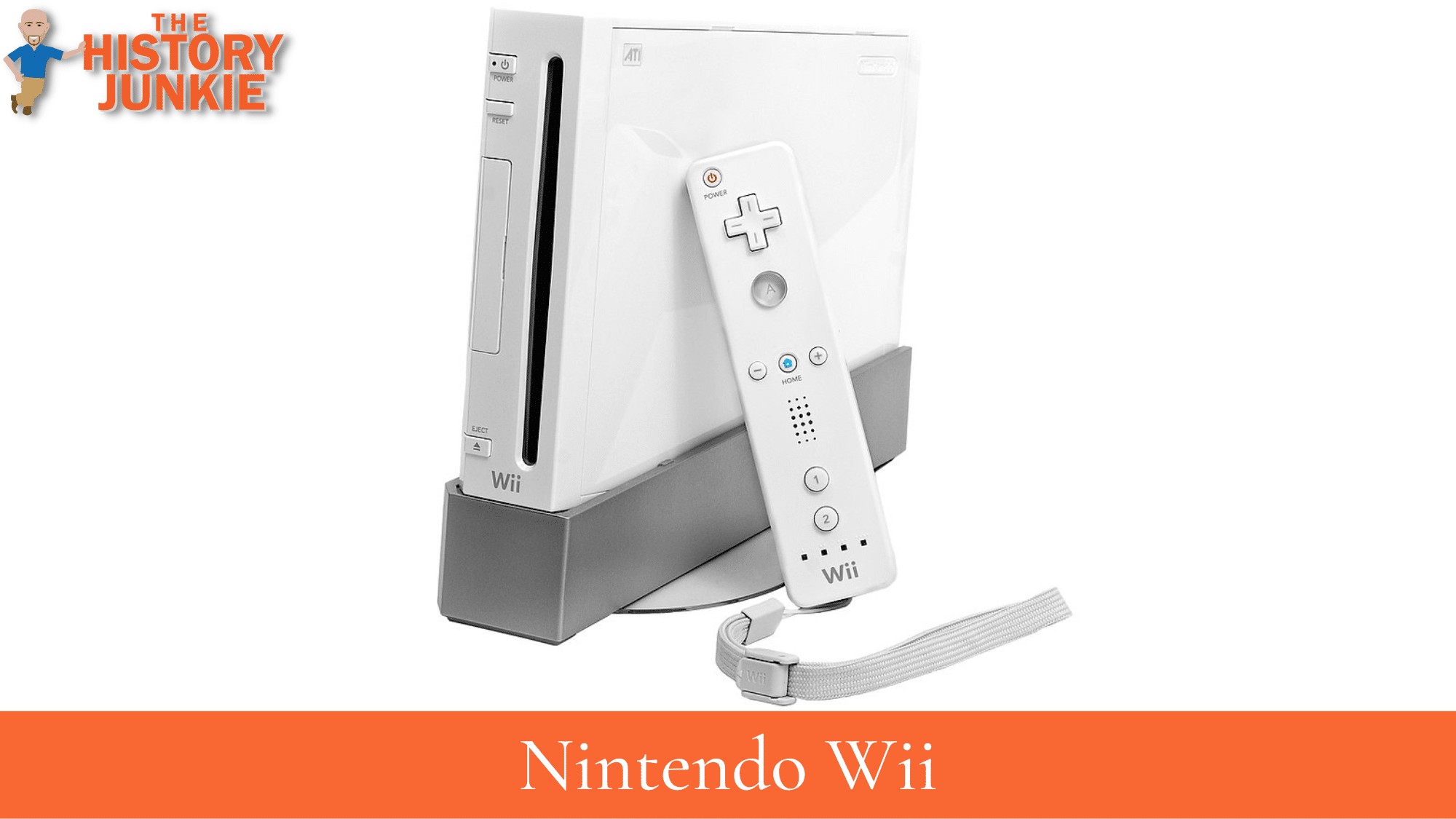
Nintendo Wii - November 19, 2006
After the original PlayStation outsold the Nintendo 64 and then the Sony PlayStation 2 dominated the market and made the GameCube forgettable, Nintendo needed something to reclaim its dominance.
The Nintendo Wii launched in 2006 with a price tag of $249.00 and a console game called Wii Sports that took advantage of its motion sensor technology.
The Wii would go on to dominate in sales and sell 101 million consoles during that generation.
This was my second choice during this generation, and I found it very enjoyable. I grabbed the Wii remote and stepped back into memory lane with its ability to purchase classics. It also continued to roll out familiar Nintendo titles like Super Mario Galaxy, Super Mario Kart Wii, Metroid, Zelda, and the list goes on.
It was also backward compatible with the GameCube.
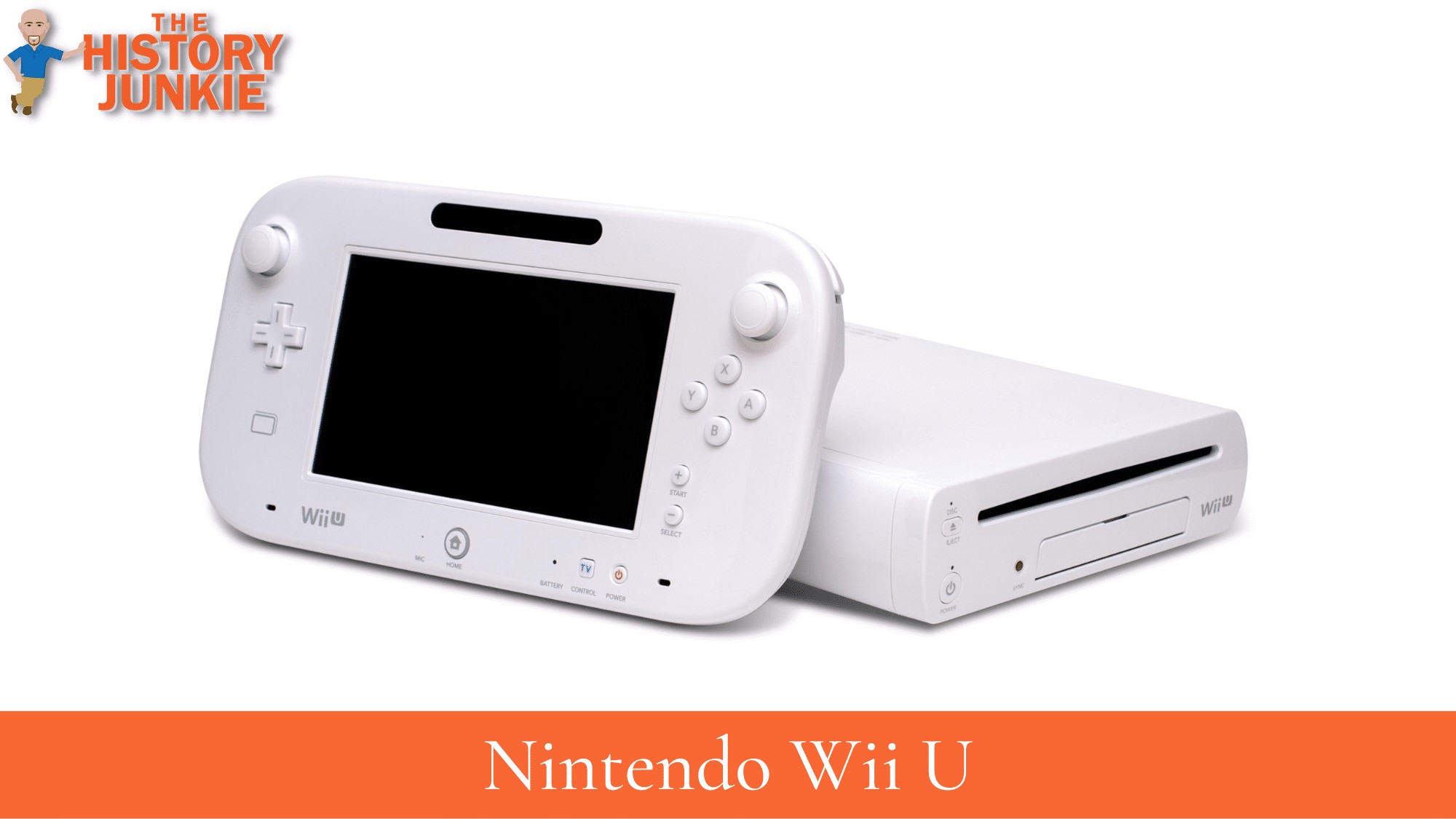
Nintendo Wii U - November 2012
After the Wii shocked everyone, there was the Wii U, which, to be honest with you, I did not even know existed prior to writing this timeline.
At the time, I was 2 years into my marriage, and I do not remember my stepdaughters ever speaking about this console. When looking at the stats, it seems many do not remember it since it only sold 13 million consoles worldwide.
I guess this was the first console of the eighth generation of consoles, but it seems as if the original Wii competed better with the newer consoles than this one.
The positive thing that came out of the Wii U for Nintendo is that it laid the foundation for the Nintendo Switch.
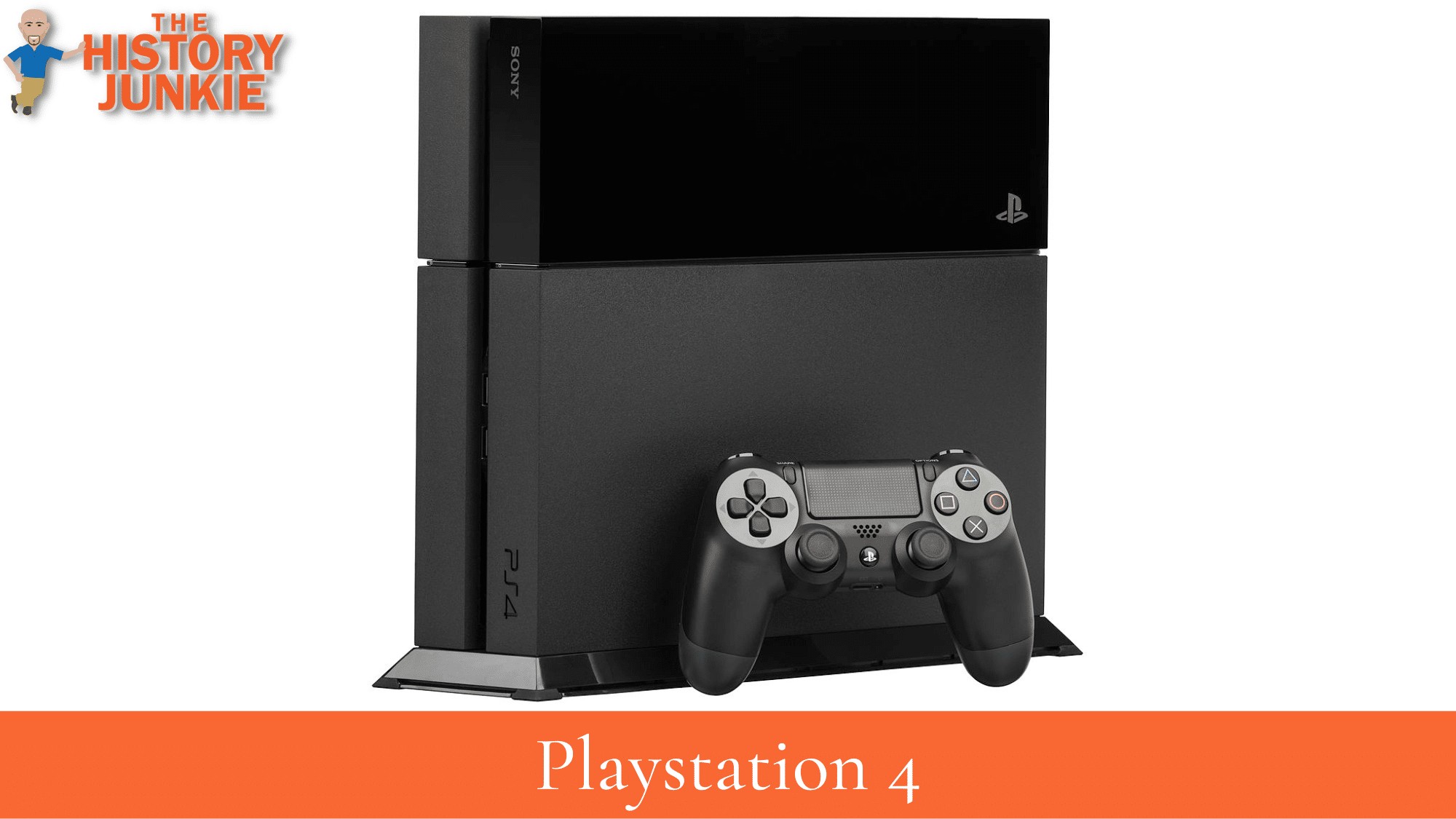
PlayStation 4 - November 2013
After struggling a bit with the PS3, Sony launched the PlayStation 4, which would become the highest-selling console in history.
This would be the next console I personally purchased for myself and would enjoy until a child who was visiting tried to jam a couple of games into it and break the console. It was great while it lasted.
The PS4 featured so many improvements to online play and is one of the reasons that YouTube is now filled with so many gamers sharing their gameplay.
I personally enjoyed Red Dead Redemption 2, and it remains one of my favorite games of all time.
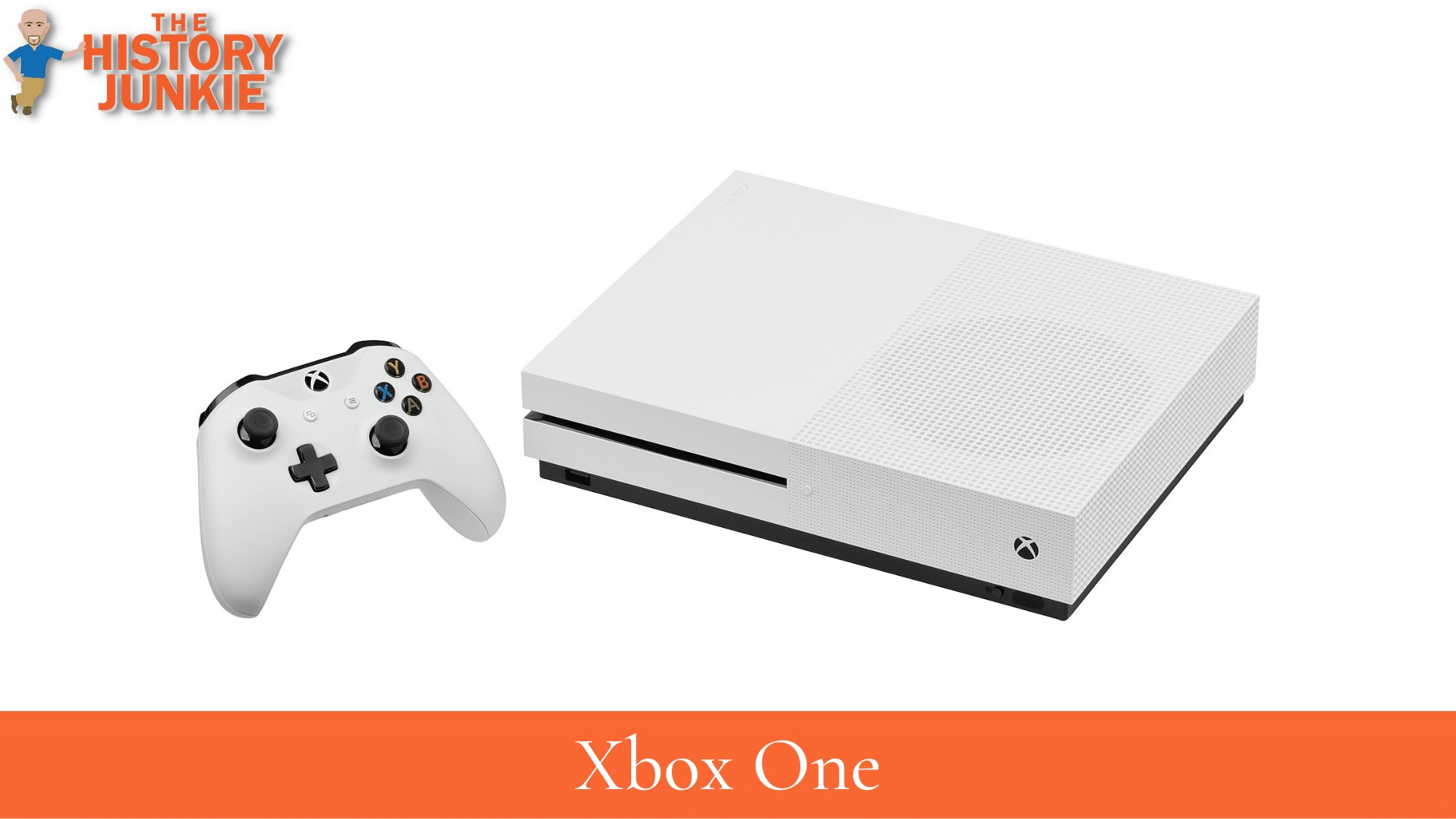
Xbox One - November 22, 2013
The Xbox One came loaded. Check out the specs from Wikipedia:
Moving away from its predecessor's PowerPC-based architecture, the Xbox One marks a shift back to the x86 architecture used in the original Xbox; it features an AMD Accelerated Processing Unit (APU) built around the x86-64 instruction set. Xbox One's controller was redesigned over the Xbox 360's, with a redesigned body, D-pad, and triggers capable of delivering directional haptic feedback. The console places an increased emphasis on cloud computing, as well as social networking features and the ability to record and share video clips or screenshots from gameplay or live-stream directly to streaming services such as Mixer and Twitch. Games can also be played off-console via a local area network on supported Windows 10 devices. The console can play Blu-ray Discs and overlay live television programming from an existing set-top box or a digital tuner for digital terrestrial television with an enhanced program guide. The console optionally included a redesigned Kinect sensor, marketed as the "Kinect 2.0", providing improved motion tracking and voice recognition.
Despite the specs, the Xbox One lagged behind the PS4, which is probably due to the entire year PS4 had before the release.
I own a PS4 and an Xbox One, and I will say that I believe Xbox Live runs smoother than the Playstation Network. I liked the design better than the PS4 due to having kids and knowing they can be rough on technology.
However, I do prefer some of the exclusive games for the PS4 a little more, which is just a preference.

Nintendo Switch - March 3, 2017
The last console in the Video Game Console Timeline, for now, is the Nintendo Switch.
The Nintendo Switch launched in March of 2017 and combined the best of their mobile experience with the popularity of the Wii. It also improved their online capability.
I love the Switch, and when I have time to play it, I love to kick back and play the classics I enjoyed on the NES, SNES, and N64. I also enjoy playing Mario Kart with my kids because it is easy enough for them to pick up and play competitively.
My boys often play Fortnite together, with one of them on the Switch and the other on the Xbox One.
While the Xbox One and PS4 are similar consoles, the Switch targets that casual audience that continues to grow due to the advancement of mobile games.
Conclusion
I will update the console's ninth generation at some point in the future because those console legacies are still being written. The Xbox Series X and PS5 are two years old but are extremely expensive and seem to have a hard time staying in stock.
Many folks still play their supported eighth generation due to the price of the newer consoles and the short supply. While the graphic difference is noticeable, it is not as great of a difference as what it used to be. With the exception of Roblox and Minecraft, the days of pixelation are over.
The Video Game Console Timeline will probably continue long after I am gone, and who knows what my grandkids will be playing.
